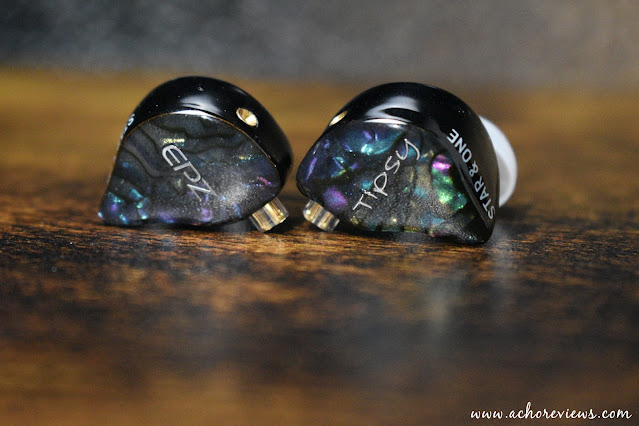Good to know. I haven’t experienced any issues with it yet (even when connected to laptop for 8 or 10 hours straight) but it does get a little warm, not hot but definitely warmer than other dongles.
Sivga Nightingale
TLDR version on YouTube: TDLR - Sivga Nightingale
The Nightingale have been sent to me directly by Sivga for me to share my impressions and thoughts in this review. They have not made any specific requests and I will do my best to be as sincere and unbiased as humanly possible.
You can find the official Sivga page for the Nightingale here: Welcome to Sivga !
As always, this is a non-affiliate link, meaning I do not receive anything in exchange for clicks or purchases made.
To avoid being repetetive in my reviews, you can find all the info about how I create the reviews, equipment used, how I receive the products and how to interpret my reviews by visiting: About my reviews
Intro…
This is the first set of Sivga IEMs that I have tried. They do have a few other models but these are their latest release, and feature a 14.5mm Planar driver, which I believe is their first entry into the planar IEM world.
I am not overly sure what the street price of these IEMs is but the links they share on their official page (at the time of putting this review together) lead to them being available on Amazon US for $230 and on Aliexpress for 333€ plus 87€ shipping. So we are not talking about a budget set of IEMs here.
Having reviewed some of their headphones in the past, I know that Sivga are capable of some good stuff, usually with their own twist to it. In this case, they certainly put their own twist to but let’s start from the beginning.
Presentation…
The packaging is simple but elegant. Arriving in a black box with just the brand and model on the front, along with some brief details on the back, the lid lifts off to reveal the IEMs sitting in a cutout with the storage case sitting in another cutout below. There is a velvety finish to the surrounding material that helps with the elegance.
Opening the storage case, which I am quite fond of, we find the included 4.4mm cable, along with a plastic storage case for the additional 6 sets of tips that are included. The tips are 3 sizes of 2 different types (plus the ones installed) but I will say that they are a little on the small size. The largest size work fine for me personally but I am usually a medium (depending on tip type and IEM in question), so if you are someone with larger canals, you will need to provide tips that work better for you.
The plastic storage case for the tips is a nice touch. I do have a few of these around but this one is a little more compact and fits easily in the mesh pocket of the included transport/storage case. Speaking of the case, it is semi-rigid, more towards rigid than semi, and has a black and grey pattern to it with the Sivga logo on the top. The case is of a nice size and of good quality. I don’t usually go into this much detail with included cases, so it shows that I am a fan of this one.
Build and aesthetics…
The Nightingale use a teardrop shape for the shells, with a resin interior shell and a faceplate with a wood look to it that is surrounded by a metal border. The IEMs are fairly small and, although they are not the lightest of IEMs for their size, they fit me well and caused no fatigue over longer listening sessions due to the build.
The two pin sockets are sort of recessed behind the faceplate, just slightly, which gives for a very accomplished aesthetic when they are connected. The included cable is pretty decent, with metal hardware except for the strain relief around the two pin connectors, which is black rubber but has a silver metal ring that matches the aesthetics of the IEMs.
I have to say that I am quite fond of the simple but elegant aesthetics of the IEMs and have no issues with the fit or the apparent build quality.
Sound…
I’m afraid here is where things go downhill. When listening to the Nightingale out of the box, I had flashbacks of the Audeze iSine IEMs. I’m afraid that the tuning of the Nightingale is possibly one of the worst I have come across on planar IEMs out of the box, along with the iSine.
There is a lack of bass to the tuning that is very apparent. I have said many times that I am not someone who craves excessive midbass, in fact, it gives me a headache if it is both excessive and not of great quality, however, the Nightingale is more that just lean on the bass, it is pretty absent. Even with smaller bore tips, I still found it to be way below my preferences.
But the lack of bass I can live with, a quick press of a button on an iFi device makes things much better, it is the upper mids that I find the worst on these IEMs. At 1.5kHz the tuning just rolls off and keeps rolling off until it appears back with a peak well into the treble range. This makes everything sound unclear, distant, and, well, just bad in my opinion.
I know that audio is very subjective and I am always the first to preface things with “in my opinon”, “for my tastes” or “with my preferences”, and I am sure that someone will enjoy the Nightingale tuning out of the box, but I think that will be a very small selection of people.
Just so you know what I am talking about, here is the graph in comparison to my usual personal target as reference:
Honestly, it looks as though they had the graph upside down when tuning these IEMs!
Usually I go through a detailed listening session with my list of test tracks (which can be found here) and mention things that I notice, always referring to the same tracks so that it is easy to compare with any of my previous reviews. However, in this case, it just isn’t needed, as the things that grab my attention are all negative and I have already explained the overall picture above.
But let’s get away from the negativity and talk about fixing the issues!
I mentioned the Audeze iSine above and, for those of you that don’t know, it was one of the main planar offerings way before the planar boom that happened recently. I think that it was generally agreed (obviously with some exceptions as always) that it was tuned pretty terrible and needed EQ. In fact, even the manufacturer knew this and sold a specific cable with DSP inside that did the EQ and made it a pretty darn good set of IEMs, holding up to even the recent batch quite a few years later.
Well, Sivga have a set of planar IEMs that are in many ways very similar.
After spending some hours with the stock tuning, I gave up and broke out the parametric EQ, something that I very rarely do for reviews. I will sometimes play around with EQ and do some tests but I avoid using it for detailed listening sessions for reviews. Well, after some tweaking, especially in those lows and in the upper mids, the Nightingale started to come alive. In fact, it started to be a very enjoyable and good performing IEM.
After some more playing around, I started to investigate tuning it to some other FR’s from other IEMs and I have to say that I am very impressed with how well this IEM performs when we take it towards other tunings.
Obviously it is great when tuned to my preference target but when tuned to other IEMs that I am fond of, it took very well to their sound signature and performed on a very good level. It was a lot of fun to take tunings that I like from budget IEMs and turn the Nightingale into a set that had that same tuning but with much better performance.
Even when I pushed its limits with some ridiculously bass heavy tunings, the Nightingale didn’t seem to suffer (as long as the preamp was set correctly of course) and outperformed a lot of IEMs at their own game.
It is capable of good detail, good sound stage, good image placement, in fact, it is just a very capable IEM in the sound department, it just needs tuning.
Conclusion…
I never enjoy posting negative reviews and, to be honest, I don’t feel this is a negative review in general, the only negative about this set is the tuning.
I don’t score IEMs except on Head-Fi as it is obligatory, but in this case, a set of 3 out of 10 IEMs could easily become a 9 out of 10 just with some EQ applied.
Now, I understand that there are a lot of people out there that don’t want to EQ, and plenty of people out there that really don’t understand EQ or how to use it, but I do feel that, with the Nightingale, it is going to become an obligatory part of the chain.
The bass can easily be fixed with a bass boost on an iFi chain, or even by using an impedance adapter. In fact, there may be plenty of people out there who are ok with the bass, even I could live with it for a lot of music, but it is that huge absence in the 2 to 8kHz range that makes me say that EQ is a must with these IEMs.
They are a well built, comfortable and good looking set of IEMs that, when EQ’d, become a very good set of planar IEMs, rivaling almost all the other planar sets out there on performance, but they need that tweak to get them there.
As always, this review is available in Spanish both on my blog (www.achoreviews.com) and on YouTube (www.youtube.com/achoreviews)
All FR measurements of IEMs can be viewed and compared on achoreviews.squig.link
All isolation measurements of IEMs can be found on achoreviews.squig.link/isolation
Kefine Klanar
TLDR version on YouTube: TDLR - Kefine Klanar
The Kefine Klanar have been sent to me directly by Kefine in exchange for the publication of this review. As always, I will make every attempt to be as unbiased as humanly possible. Kefine have not made any requests or comments and all opinions are my own.
I cannot find an official page for Kefine but the Klanar are available through all of the usual stores that sell IEMs online.
To avoid being repetetive in my reviews, you can find all the info about how I create the reviews, equipment used, how I receive the products and how to interpret my reviews by visiting: About my reviews
Intro…
Kefine is a new brand and the Klanar are their first set of IEMs. As an entry into the IEM world, they have opted to go with a 14.5mm planar driver and are priced at a little over the 100€ mark.
I can’t really give you a back story on them as I don’t know it but when they reached out to me, I was happy to give them a listen.
It’s true that they have picked a segment, the planar magnetic IEM segment, that is quite crowded at the moment, yet the price is an interesting one, coming in at the lower end of the current planar options, so let’s see how they did.
Presentation…
The box is a plain black one, with a lift off lid, that arrives inside a white cardboard sleeve. The front shows an image of the IEMs, along with the brand, model and “Planar IEM” on the front. On the back we get the basic specs, along with another image of the IEMs, and that is about it. The outer packaging doesn’t do much to stand out, but that is not a complaint as I don’t listen to the packaging. I would rather packaging be basic and the contents get the attention.
Inside the box we find that the packaging stays simple, with just a piece of foam with two cutouts for the IEMs and a larger one for the storage/transport case. The case is a simple grey semi rigid type with Kefine on the top and contains the additional silicone tips. In total there are 7 sets of tips included, with 3 different sizes and two core sizes, that are nothing special but do the job and are what I have used for this review.
Build and aesthetics…
The IEMs are almost as simple as the packaging, using a generic shape with Kefine written in white text and a white circle on a black faceplate and shell.
By simple I am not being negative here at all. No, they are not something that is going to jump out and grab your attention, which is often a very good thing, but they use a metal faceplate on a dark plastic shell that does not look out of place and honestly look to be well built (although only time will tell).
Due to the simple, generic shape of the shells, they should be comfortable for the vast majority of users and I am no exception here. For long listening periods I did not find them to create any discomfort at all.
The included cable is a four core brown and black weave, with a metal 3.5mm connector and splitter, along with plastic two pin connectors at the IEM end. As with the whole package so far, nothing is special but nothing is offensive, I can’t see the aesthetics being a negative at all.
Sound…
All tracks mentioned are clickable links that allow you to open the reference track in the streaming service of your choice (YouTube, Tidal, Qobuz, Spotify, etc.)
Ok, so far we have a very generic set of IEMs and when we get to the sound, we could expect the same, seeing that the driver used in these IEMs is one that we have seen in many other models so far. The majority of those other models have been on the better side of things, although there have been a few that were let down by the tuning. In the case of the Klanar, I must say that I feel they have done a good job.
Here is the graph of the Klanar in comparison to my usual personal preference target:
It’s been a while since I said it, so I will remind people that my target is not a “be all end all” as far as tuning. While that reference is a good guide to my personal preferences as far as tuning, it doesn’t mean that I don’t enjoy other sound signatures that deviate from it (or that I always enjoy those that are close to it).
Now, let’s do my usual round up referring to my test tracks that I always use for detailed listening and review references.
Starting off with the subbass, there is plenty of presence in these areas with the Klanar. “Chameleon” has a lot of rumble in those low ranges, which is made even more present by the boosted midbass range that follows it.
To be honest, it is a little too much for my own tastes, making things a little overpowering for me in those lower notes, however, for those that do like plenty of low end, there is no denying that it does it well.
Let’s face it, “Chameleon” is a track that is exaggerated in the lower ranges (being one of the reasons that I use it for testing), so moving on to something that is more focused in the midbass than the subbass, such as “Sun Is Shining”, that exaggerated low end cleans up quite a bit. There is still plenty of midbass for those who want it but we are no longer surrounded by a wall of rumble.
Here the midbass does seem more controlled and refined, with a decent overall performance even if a little elevated for my tastes.
If we focus on my usual midbass fatigue test track, which is “Crazy” by Daniella Andrade, I do not find the midbass tiring. This is always a good sign to me as, when midbass is overly present and not well controlled, I will quickly feel nauseous and even get a headache before the end of the track. Again, it is noticeable that the presence is above what would be my preference for this track but the quality is there to keep it from being a negative.
As we move into the mid range, here there is a noticeable lack of presence. This can make male vocals lack presence in their midrange, sort of hiding them behind the bass. With female vocals backed with acoustic music, such as Daniella Andrade in the track I just mentioned, or Sara K. in “All You Love Turned To Passion”, this is not as noticeable. There is plenty of presence in the upper mids to bring clarity to them even if there is a bit of mid presence lacking.
This lack of mids stands out more when we have more complex tracks, especially with male vocals, such as “Get Lucky” or something more rock like Rage Against The Machine in “Killing In The Name Of”, where Zac is slightly overshadowed by those thunderous bass and guitar notes.
One thing I will say is that Kefine have done a very good job elevating those upper mids to bring clarity and counteract the bass presence, without making the IEMs shouty or thin. Looking at the graph I would have expected things to be very shouty but it is not the case.
As we move into the upper treble, there is a bit of roll off which is noticeable but does not sound bad. It just adds to that V shaped signature that the Klanar are aiming for.
Details are as good as on many other sets that use this same planar driver, with the lower ranges being very well presented as far as details go, unless we have the wall of rumble that is “Chameleon” of course ![]()
Sound stage I would say is about average for a set of IEMs, which is not bad for something that has this amount of bass presence. The bass can fill the sound stage quite nicely and while things are not milimetrically placed, that extra clarity of the upper mids does allow a nice stereo separation.
Conclusion…
I think that the Klanar are a very respectable first entry for a new company. They have kept things very simple with the design and presentation, chosen a sound signature that should appeal to the masses and spent their resources on getting that part, the most important part, right.
They are not my favourite sound signature but they are a very enjoyable presentation that I have had no issue listening to over the past week. Again, I feel that the tuning they have decided to go with is something that is not going to stand them apart from many other brands in the segment but they have made a good job of it.
When you are new, you can take the risk of doing something completely different and either make a huge impact or fail miserably and make your first impression a bad one, which is something that will follow you for quite some time. In this case, Kefine have opted to do something simple and I think that they have set a good foundation to grow upon.
__
As with all my reviews, this one is also available in Spanish both on my blog (www.achoreviews.com) and on YouTube (www.youtube.com/achoreviews)
All FR measurements of IEMs can be viewed and compared on achoreviews.squig.link
All isolation measurements of IEMs can be found on achoreviews.squig.link/isolation
Aroma Audio FEI WAN
TLDR version on YouTube: TDLR - Aroma Audio FEI WAN
The Aroma FEI WAN have been sent to me as part of a tour, for me to test them out and to share my opinions. I have not actually had any contact with Aroma Audio as I was very kindly included in the tour by a fellow IEM lover. Therefore, it goes without saying that I have not received any comments or requests from Aroma Audio (or anyone else) and my opinions are based on me being as sincere and unbiased as humanly possible.
The official page for the Aroma FEI WAN can be found here: FEI WAN
As with all the links I post, this is a non-affiliate link.
To avoid being repetetive in my reviews, you can find all the info about how I create the reviews, equipment used, how I receive the products and how to interpret my reviews by visiting: About my reviews
Intro…
Aroma Audio are a company that is firmly planted in the high end IEM segment. Although they do produce a DAC, an amplifier and a couple of other accessories, they are know for their IEMs, both universal and custom, ranging from the Star, which comes in at just over 200€, up to the Jewel, which is priced at just over 5000€. Out of the 13 models they currently have on their site, only 4 of these are less than 4 digit prices, so we are obviously not talking about a budget brand.
The FEI WAN I believe is their latest release and is priced around 4500€, making it probably the most expensive set of IEMs I have reviewed to date. Featuring 2x 9.2mm dynamic drivers, together with 10x balanced armature drivers, it uses a patented technology that they call “Coaxial Strong Magnetic Pulse Pair Double Dynamic Drivers Technology”, which, according to their site, involves reversing the magnetic polarity and coil polarity of one of the dynamic drivers.
That is a lot of drivers, a lot of jargon and even more euros, so let’s see what makes the FEI WAN special.
Build and aesthetics…
I skipped presentation as this arrived in a small brown cardboard box with no product packaging (as this is a tour unit). It did come with a storage case but I am not sure if that is relevant to the actual retail packaging or not.
The IEMs shells are 3D printed in a translucent yellow, with a yellow/gold sparkle under the face plate that shows the logo on one IEM and the model on the other, both in purple.
I have to say that I am not a fan of the aesthetics of these IEMs. Obviously that is just a personal thing as beauty is in the eye of the beholder, but they wouldn’t be my choice.
They are very light weight and the nozzles are rather long, with a curve to them. The nozzles are a little on the thicker side but not enough for me to have had any issues using normal tips of choice with them.
The nozzles also have a curve to them and, although the IEMs are by no means small, I have found them to be very comfortable. As soon as I put them in they felt at home and not fatigue built up over long (some very long) listening sessions.
The included cable is Aroma’s own “Sparkle” cable, which retails on their site for over 500€. The cable is square core, silver plated oxygen free and Aroma say it makes the sound more “shiny”. Now, you all know my opinions on cables, that if a cable is good, it is good regardless of price, but I wouldn’t pick a cable to change the sound of my IEMs. In this case, the cable is one I am very fond of. It is a four core wrapped in fabric, yet it is not bulky and it is very soft to the touch, making it one of the nicest cables I have used. Metal hardware is present at both ends, although the two pin ends do have the plastic that is made for recessed connectors showing.
I understand that it is not possible to recess the connectors into the FEI WAN as it is rather crowded in there, and I applaud that they have included a nice cable, but for 4500€, it would have been nice for something to cover those plastic bits.
Sound…
All tracks mentioned are clickable links that allow you to open the reference track in the streaming service of your choice (YouTube, Tidal, Qobuz, Spotify, etc.)
So, the most important question of them all, how does the FEI WAN sound?
It sounds good. Very good!
I have spent my time with it listening to all kinds of music, from rock to rap, classical to pop, blues to reggae, and everything in between. It has done a great job with all the music I have thrown at it.
There have been a few occasions when things have been a little harsh but I think it is due to it revealing issues with the recordings more than any inherent issues of the IEMs itself.
But rather than just saying it sounds good, I will do my usual run through my test track list and give my comments on the performance in relation to the specific tracks.
First off, here is the graph in relation to my usual preference target:
Now this is one of those occasions when I was surprised to see the graph of the IEMs as I really don’t find that they sound like they graph. Of course, this can be me hearing what I want to hear, unconscious biases and all that, but I would never have guessed the FR based on what I had been hearing for 5 or 6 days before I measured them.
The subbass is deep and present yet very clean and controlled, in fact the whole bass area is, something that I find particularly impressive in the midbass section. Using my usual “Chameleon” as a test of the subbass, there is a deep and rumbling presence, yet the sensation is more of a clean subbass note than it is of a rumbling presence.
“Royals” has very defined subbass, with that grit that is part of the subbass on this track being quite apparent yet not dominant. I even ran some tests with a couple of bass drops that I don’t have on my usual test track list and the FEI WAN never seemed to lose control.
I just said that I am particularly impressed by the midbass, especially after seeing the graph. I did notice a little elevation in the midbass area but I would never have guessed that it would roll over into the lower mids. The sensation is not of bass bleed, rather of a very clean and precise midbass, with fast bass notes, such as in a lot of Victor Wootens music, being easily appreciated, note by note, without the sensation of loss of control.
My fatigue test of midbass, “Crazy”, does show that the midbass is there but it does not take over the sound signature and gives a lovely warmth to the guitar without becoming fatiguing at all. In fact, going through my test list, from EDM to acoustic, I never had the sensation that the midbass was anything less than great. That is not something I would have expected had I seen the graph first.
As we move through the mids and into the upper mids, again, the graph would lead me to expect a very low frequency focus with a lack of presence, yet, again, that is not the sensation that I get.
I am not sure if it is due to the quality of the drivers being used but the mid range, even the upper mids, do not give me a sensation of being recessed or lacking presence at all. Even with things like “Bury A Friend”, where there is a lot of low end presence to overcome, Biliie’s vocals are still clear and present.
Listening to “Bombtrack”, I found that maybe here the vocals could seem a little further back but I think that is mainly due to the fact that the FEI WAN present a very present an impressive lower range, with the drums, bass and guitar being felt more than heard.
The upper mids and lower treble being slightly reduced works very well for some of the harsher and more sibilant tracks, such as “Hope Is A Dangerous Thing”, where Lana Del Rey is not sibilant at all yet she does not lose presence. The same can be said for Zella Day in “Seven Nation Army”.
The details are very good yet the most impressive part to me is the placing of these details. There is a good sense of soundstage with all tracks, yet, when a track that has a lot of detail surrounding you, the sensation becomes excellent. I would say that, as far as image placement and sensation of layering, the FEI WAN are possibly the best IEMs I have heard to date.
For example “Strange Fruit” is a track that has plenty of layers and detail to the vocals but to really appreciate the complexity of what is going on, you need to hear it on something that really makes these layers shine. One of my favourite presentations of this song is with the Hifiman HE1000se and the Susvara, well, the FEI WAN create a sensation that is almost as good. That is a lot of praise!
Conclusion…
The FEI WAN are a set of IEMs that I don’t think I would have ever taken notice of if I had seen the graph (and the price) before listening to them. When I received them, I knew nothing about them and I think that has been responsible for most of the fun I have had with these IEMs.
They are a tuning that I would never have thought I would like but it just works together with the performance of these IEMs. There are certain tracks that I would prefer on other sets but in general, I can’t say that the FEI WAN haven’t impressed me every day I have spent with them.
I obviously can’t say that they are worth their price, as that is something that each person needs to decide for themselves when talking about this level of investment, but if you are in the market for a set of IEMs in this kind of price range, I think that the FEI WAN are something that you should really try to listen to if you can, as they are surprisingly different yet great at the same time.
__
As always, my review is also available in Spanish both on my blog (www.achoreviews.com) and on YouTube (www.youtube.com/achoreviews)
All FR measurements of IEMs can be viewed and compared on achoreviews.squig.link
All isolation measurements of IEMs can be found on achoreviews.squig.link/isolation
Review - Gizaudio x Binary Acoustics Chopin
TLDR version on YouTube: TDLR - Gizaudio x Binary Acoustics Chopin
The Gizaudio x Binary Acoustics Chopin have been sent to me by HifiGo in exchange for the publication of this review. It has been quite some time since I featured anything from HifiGo and they have not made any requests or specific comments. I will, as always, aim to be as unbiased as possible in my review.
The Chopin can be purchased from HifiGo here: https://hifigo.com/products/gizaudio-binary-chopin
As with all the links I share, this is a non-affiliate link, meaning I do not receive anything in exchange for clicks or purchases.
To avoid being repetetive in my reviews, you can find all the info about how I create the reviews, equipment used, how I receive the products and how to interpret my reviews by visiting: About my reviews
Intro…
There has been quite a bit of furor around the Chopin lately. I am not really someone who reads or watches reviews of products, mainly to not build up expectations on things that I may review. However, while I haven’t actually read (or seen) any reviews of the Chopin, it has been impossible to not notice the amount of times it has been mentioned. So, when HifiGo offered to send it out, I was happy to give it a try and see what all the noise is about.
In case anyone, like me, has not read any of the reviews and, unlike me, has managed to somehow avoid the hype, here is a brief summary of what the Gizaudio x Binary Acoustics Chopin is.
Gizaudio is a reviewer who is actually known by many as Timmy who produces for Crinacle, however, he has plenty of experience in reviewing, with his YouTube channel having over 36k subscribers and his web being full of content. This is also not his first collaboration, so he is by no means new to the IEM game.
Binary Acoustics is a brand that has been around since 2017 and while they have other models, the Chopin seems to be the only one available at the moment. I have heard of Binary in the past but, to be honest, I couldn’t tell you anything about other models of theirs without looking it up.
Finally, Chopin. According to the publicity for these IEMs, they are meant to pay homage to Chopin. If you have no idea who Chopin was, then I suggest you just type “classical music” into Google and start there ![]()
So, the IEMs… They feature a four driver hybrid configuration, featuring a single 8mm ceramic diaphragm dynamic driver, along with 3 custom balanced armature drivers, one for the mid range and the other two for the treble.
While these IEMs have a rather high sensitivity of 122dB/Vrms, the impedance is rather low at 12Ohms. This shouldn’t cause any issues with most dongles and amplifiers but is something to consider if your device has a high output impedance.
So, enough about the what and let’s get to the how…
Presentation…
I have to say that I am impressed by the presentation of these IEMs. I know that they are a 200€ set of IEMs and the contents aren’t really anything to write home about, but the way it is presented is original in comparison to so many other models.
Here we get a wide but thin box that stands up and the lid that lifts off is almost like a showcase lid (although not tansparent), leaving just a small section at the bottom as a stand. The box is a silvery grey colour, with the model and brand on the front, together with a simple design in black. On the back we see the FR graph and some very basic information.
While there is nothing really special about the aesthetics, I think it looks very elegant and makes it look like an expensive set of IEMs. Removing the top reveals the storage/transport case and two small white boxes that are also standing up vertically.
Inside the two boxes we find the user manual in one, with the cable, tips and a cleaning brush in the other.
The storage case is something that reminds me of a case that our measuring equipment comes in at work. It is a very robust and well built hard case that opens up to reveal a soft lined interior that contains two small drawstring bags. Inside each of these bags we find one IEM, well protected from any damage.
While the presentation of an IEM is not really something to get excited about, except on very specific occasions, I do like to point out when something is different from the usual experience and that is the case with the Chopin. While there contents are fairly basic, the presentation makes you feel like you are receiving a product that has been cared for.
Build and aesthetics…
The IEMs use a 3D printed shell with a stainless steel faceplate that features the same design as on the exterior of the box. They again look modern and elegant, without being overly shouty. The shape is different to most sets and look like they would be uncomfortable but I actually found that they work very well for my ear anatomy and I find them very comfortable.
The nozzles are on the larger side and are fairly long but take the included tips well and allow me to get a nice deepish fit. I am not sure what tips these are but they seem to be more robust than most other silicon tips, with a tougher center core, and both fit securely and seal well (medium) in my ears.
The included cable is nothing special but there is nothing wrong with it either. It’s of a simple twisted style, combining both metal and plastic connectors and hardware.
As mentioned, the included storage case is very nice and will protect the IEMs well, although it is a little large to be carried around in a pocket (in my pockets anyway).
In general, I get the impression of a well built and nicely put together set of IEMs that aren’t anything really special but still give a sensation of being a good product.
Sound…
All tracks mentioned are clickable links that allow you to open the reference track in the streaming service of your choice (YouTube, Tidal, Qobuz, Spotify, etc.)
Ever wondered what it is like to have a subwoofer and some satellite speakers in your ears? Well, the Chopin comes very close to answering that question. In fact, as soon as I put them in and started listening, they reminded me of a set of Meyer Sound MM4 speakers paired with a 750-LFC sub. Now that is going to mean absolutely nothing to the vast majority of you out there, unless you are into pro sound speakers, but it is still what came to mind.
So, for those of you that have absolutely no idea what I am talking about, the 750-LFC is a subwoofer that is capable of going very low and staying very clean, while the MM4 are small satellite speakers which, while rated at 120Hz to 18kHz, don’t really do much below the 500Hz mark and sort of focus things on the upper mids.
As an image is worth a thousand words (maybe I should just do photographic reviews instead of rambling on ![]() ), here is the graph of the Chopin with my usual personal preference target for reference:
), here is the graph of the Chopin with my usual personal preference target for reference:
For those of you that read the graphs and automatically see the tuning, you will understand what I am getting at, but for those of you that prefer my thousand words, here are my impressions based on my usual list of test tracks.
As you can probably guess, there is no shortage of subbass with the Chopin. The lowest notes are presented in a way that really does give you the sensation of having a subwoofer. However, although there is a lot of subbass, it is also very well controlled and does have a method to its madness.
Using my usual “Chameleon” test, after spending time listening to a lot of hip hop and other bass heavy music throughout my general listening tests, I expected there to be a huge amount of vibration and rumble and there is, but it is a controlled rumble, even allowing the nuances of that tremendous subbass that is both the track and the tuning to be appreciated.
However, as we move from the subbass to the midbass, there is a ramp down that can leave certain tracks missing a bit of punch from those bass ranges. The classic P-Bass through an Ampeg stack sound from the 70’s does not come across as it usually does. In fact, if there are any bass players out there, one of my most prized bass pedals is the DOD Meatbox, a subsynth pedal that can make anyones teeth rattle in exchange for a loss of a bit of punch and clarity. This pedal is something that Juan Alderete (Mars Volta, Hella, System of a Down etc.) referred to as a “speaker popper”. Well, the Chopin has a tuning that can be reminiscent of that pedal effect at times, giving a huge amount of subbass but still very clean.
But I digress… back to the midbass. Here there is a bit of a lack of presence, especially as the midbass meets the lower mids, which creates a very clean transition but can also leave certain vocals, and certain acoustic stringed instruments, craving a bit more warmth in those ranges. Obviously on tracks that have subbass presence, things do not come across as lacking in the low end, but for simple acoustic assemblies, using just acoustic guitars and male vocals, I do find that there is a bit of body missing.
As we move into the upper mids, there is a ramp up from just under 1kHz to just under 3kHz that works to bring back light to what would otherwise be a very dark and clouded sound. While this does brighten things up, I do get the sensation that it again does not work great for male vocals, as the slight lack of body to the lower end of vocals gets overrun by that extra presence in the upper mids and can bring out some harshness.
In the case of female vocals, I find the opposite is true. While there are some specific voices that can become a little harsh, the majority of female vocals are clean and well presented, avoiding both harshness and sibilance. With EDM that features female singers, I found that it brought back the days when I could stay in a disco until the sun came up (and not be falling asleep by 2am), where the level of bass was huge yet the vocals still shined through.
As we move into the upper ranges, things are rather smooth and while they are not exactly lacking, the sensation of bass does make it seem like the treble is more rolled of than it actually is. This can make some tracks feel like they are missing air and extension but I don’t think they are, it is more of the way it balances out with that low end and upper mid focus.
As far as sound stage, they do a pretty good job. I wouldn’t say that they are huge but they do have a nice sensation to them, paired with good details that are pretty well placed. This is one of those few occasions when IEMs actually work in favour of soundstage in comparison to speakers due to them being inserted in your ears and giving a better stereo separation of those lower notes.
Conclusion…
Is the Chopin a tuning I would choose personally to listen to music? No.
Does it do a good job of presenting the tuning it is aiming for? Hell yes.
If you want something that gives you that sensation of a subwoofer in addition to separate high range speakers, and especially if you listen loud (which I don’t by the way), then I think that the Chopin is something that probably doesn’t have many rivals out there.
I have listened to bassier IEMs, yet they didn’t keep the composure and cleanliness that the Chopin do, where it is capable of both rattling your skull and separating the notes that it is using to rattle it at the same time.
__
All FR measurements of IEMs can be viewed and compared on achoreviews.squig.link
All isolation measurements of IEMs can be found on achoreviews.squig.link/isolation
Aful MagicOne
TLDR version on YouTube: TDLR - Aful MagicOne
The Aful MagicOne have been sent to me by HifiGo in exchange for the publication of this review. They have not made any specific requests and I will do my usual best to be as unbiased as humanly possible.
A link to the MagicOne via HifiGo can be found in the version of this review published on my blog (link at the end of this review)
As always, it is a non-affiliate link.
To avoid being repetetive in my reviews, you can find all the info about how I create the reviews, equipment used, how I receive the products and how to interpret my reviews by visiting: About my reviews
Intro…
While I personally haven’t had the chance to hear it, the Aful Performer made quite an impression when it was released in late 2022 / early 2023. I think that the name also worked in favour of people taking notice, which, although I am told it is pronounced A-Fu (meaning blessing in Chinese), I think we all remember what was the first thing that sprung to mind when reading the name. I will refrain from any jokes, as they have already been done, but I actually think it was quite a smart name from marketing terms. It was certainly less forgettable than many of the other brands and models out there.
Looking at the Aful site, it seems that there are 2 versions of the Performer available, the 5 and the 8, while the model I am reviewing today is a more budget oriented set, coming in at just under 130€ on HifiGo (at the time of writing this review).
Where the Performer series are based on hybrid technology with multiple drivers, the MagicOne is as simple as it gets, a single balanced armature driver. There is plenty of mention of it being a special custom design BA, with innovative SE-Math Electro-Acoustic Intermodulation Technology (I have no idea what that means) and Nautilius Acoustic Maze (which sounds difficult), but at the end of the day, we want to know what it does when we plug it into the device of our choice and hit play!
Presentation…
A black sleeve featuring the IEMs on the cover and specifications on the back, slides away to reveal a simple black box with AFUL shown in small letters on the top. Inside this box we find two cutouts for the IEMs and a larger cutout for the storage/travel case.
The case is round, black, and made of what feels to be aluminium, with AFUL on the top in white letters. These round cases do offer quite a bit more protection but are more difficult to carry around in a pocket.
Opening the case reveals the included cable, along with two packets of additional tips. One packet contains 3 sizes of simple white silicone tips and the other contains 3 sets of black silicone tips with a slightly smaller, and more robust, core.
A nice touch is that the black tips have one blue core and one red core for each size, this means that you can easily identify the left and right IEM when using these tips. I actually found the black tips to be comfortable and to grip and seal very well, being my choice for this reviews.
Build and aesthetics…
Starting with the cable, it is quite a nice cable although it does feel a little plasticky on the outside. A quadruple weave in gray and silver, featuring all metal hardware, including the chin slider for those who prefer it. The cable terminates in a 4.4mm balanced connector (also available in 3.5mm) that sports AFUL on it, leading to the two pin connectors at the other end that sit flush with the IEMs. The cable matches the IEMs and gives a quality aesthetic to the package.
The IEMs themselves are of clear resin with a faceplate that is white but is not just a simple white plate. It is more of a sprayed finish under the clear layer, along with a silver design that has been “inspired by snowflakes” sporting matching silver letters underneath that read AFUL on one IEM and MagicOne on the other.
The shape is rather generic and on the smaller side with longer nozzles, which I think will work well for many people. However, one thing to note is that there is no vent on these IEMs, meaning that those who suffer from pressure build up will notice it with the MagicOne. I personally noticed it after some longer sessions.
As the shells are clear, we can see what is going on inside and, although this is a single BA driver set, there is quite a bit in there. The HifiGo page refers to an RLC Computning Network, along with an Acoustic Computing System, so it is more than just 2 wires to a BA driver.
I have to say that I like the looks of the MagicOne, they are clean and smart (in my opinion), with the comfort only being an issue when suffering from pressure build up due to the lack of vents.
Edit: After putting this review together, I realized that the MagicOne is actually vented. This does not change the fact that I suffered from pressure build up after longer listening sessions, which may or may not affect others. It does mean that my comment about the being unvented is totally wrong though. I apologize for the misinformation!
Sound…
All tracks mentioned are clickable links that allow you to open the reference track in the streaming service of your choice (YouTube, Tidal, Qobuz, Spotify, etc.)
It has been a long time since I have had a single BA driver come across my desk, at least that I can remember. I have had plenty of multi BA sets, along with even more hybrid sets containing BA’s, but no single BA. There may be a model (or models) that I am forgetting but when thinking of a single BA, I have memories of IEMs from a couple of years ago that were not that impressive. Yes, some of them could be decent as far as details but usually came with an unimpressive bass and a sort of metallic shine in the upper ranges.
Therefore, when sitting down to listen to the MagicOne, I wasn’t exactly expecting much. This is one of those cases where we prove once again that preconceived opinions are not much use until we actually get to listen to an IEM, they are not always what we expect.
As usual, let’s first take a look at the frequency response in relation to my usual personal preference:
Now this is not one of those cases where I am going to say that the IEMs sound nothing like the graph, as I find the graph to be very representative of what I am hearing. However, the performance of the BA driver, along with whatever magic that is that Aful jargon I mentioned earlier, gives for a very good outcome, even if it is not my favourite tuning.
Starting off at the lowest notes, as I always do, with my usual subbass test, there is a noticeable lack of rumble in these ranges, even if there isn’t a noticeable lack of presence. Let me explain… there is extension down into the lowest sub notes on “Chameleon”, with them being reproduced, yet there is no sensation of vibration or rumble from those notes.
This gives the sensation of a lack of subbass, which I guess is true but not because it isn’t there, it is because it is not reproduced in the usual rumbling low note way. A frequency sweep proves that there is extension down to the 25Hz mark, yet it is more of a polite tone than it is what we would normally associate with subbass. Listening to “Royals”, due to the politeness and cleanliness of these tones, it does make the track seem to not have subbass at all.
While the midbass is more boosted in comparison to my usual preference, again that cleanliness and politeness of the single BA makes things lack punch in this area. For example, with “Shot Me Down”, there is no real bass presence, with a focus more on clarity than reproduction of EDM.
If we move over to things that are more based on instrument, such as the electric guitar of Tracy Chapman in “Give Me One Reason”, there is not much warmth in the lower end of the guitar notes. The same could be said with the guitar in “Crazy”, where the midbass is noticeably reduced, leaving more of a clean tone than a warm tone that is usual with this track.
As we move into the mid range and even to the upper mids, the clarity and definition is excellent, with vocals and instruments being the center of attention, allowing us to pay attention to things like nuances in the playing of said instruments. “Dreamin’” is presented in a way that it is much easier to appreciate that the the guitar playing is not quite as simple as it may seem on so many other sets.
With “Diamonds on the Soles of Her Shoes”, the fretless bass guitar may not have the body that other sets would give it but at the same time, it allows me to focus on some of the amazing things that Bakithi Kumala pulls off on this track.
The upper mids really do add clarity into the equation, at the expense of some tracks becoming slightly harsh on occasions, yet things like the brass section in the track I just mentioned are not painful like they can be on many sets. In fact, even the voice of Paul Simon manages to avoid sibilance and harshness in comparison to many other IEMs.
On the subject of sibilance, my usual test track “Code Cool” is not actually that sibilant, I would place Patricia Barber around a +1 or +2 (on my -12 to +12, totally unscientific, sibilance ranking), whereas some other vocals that I dont usually find sibilant, or very rarely, can present sibilance on the MagicOne. One of those cases would actually be Daniella Andrade in the track “Crazy” that I mentioned a moment ago.
I think this is very much due to that slight boost around 6kHz which, although it does avoid my dreaded 5kHz pain point, it can react to certain vocals in a sibilant way. This is by no means terrible but it is noticeable.
Moving into the treble areas, there is a bit of a lack of air and shine, although, that 6kHz boost does sort of take control of that upper range, masking the treble that is found above it. Reducing that 6kHz area (playing with EQ) reveals a treble that may not be the most extended or present but is smooth and pleasurable.
I have already mentioned details throughout the review and they are rather impressive. Added to this, I find that the MagicOne have a very good sense of separation between layers and good placement of those details. The soundstage may not be huge but Aful have done a very good job of using the space, with everything well located and easily distinguished from the surrounding details.
Isolation is also very good due to the non vented shells and the great seal that these IEMs offer. As always, you can see the isolation and compare it with other models here: achoreviews.squig.link/isolation
Conclusion…
The Aful MagicOne are quite a pleasant surprise, even if they do still inherit some of the usual issues with single BA set ups. There is a noticeable lack of bass which will not suit many and that boost just above 6kHz does hide what would otherwise be a rather smooth and elegant treble, even if slightly rolled off.
Other than that, they are a well built, good looking and very well performing set of IEMs. They do a great job of revealing and separating detail and layers, making it very easy to appreciate the nuances in the playing of many great musicians.
If you are in the market for a simple set of single BA IEMs, then I think you can do far worse than the MagicOne, in fact, I think they are a very competent set in a segment that is not really full of options nowadays.
__
Apart from the link to the MagicOne via HiFiGuides, this review can also be found in Spanish both on my blog (www.achoreviews.com) and on YouTube (www.youtube.com/achoreviews)
All FR measurements of IEMs can be viewed and compared on achoreviews.squig.link
All isolation measurements of IEMs can be found on achoreviews.squig.link/isolation
Letshouer S15
TLDR version on YouTube: TDLR - Letshuoer S15
The Letshuoer S15 have been sent to me directly by Letshuoer in exchange for the publication of my opinions in this review. They have made no requests or comments and I will do my usual best to be as unbiased as possible.
The official page for the S15 can be found here: LETSHUOER S15 Third Generation 14.8mm Planar Driver R-Sonic Passive Fi – letshuoer
As always, this is a non affiliate link.
To avoid being repetetive in my reviews, you can find all the info about how I create the reviews, equipment used, how I receive the products and how to interpret my reviews by visiting: About my reviews
Intro…
The S15 is the latest release from the company who made one of my favourite planar IEMs, the S12. The S12 were the set I would reach for when I just wanted to listen to music and reset from reviewing things, they got a lot of ear time and they are still in the 10 sets that I most use when I am not reviewing something specific.
Therefore, when I was offered the chance to try out the new planar option, the S15, which features the same size 14.8mm planar driver but now in its third generation, along with a new passive radiator filter, I was excited to give them a listen.
Letshuoer already released a set with a passive radiator not too long ago, the DZ4, and I mentioned the fact that the way they had implemented it was not really what I would call a passive radiator. This did give them a bit of a unique sound that reminded me of a slight tube flavour. Whether it was due to the strange implementation of the PR or not, it was still something that I found very enjoyable for a lot of acoustic music.
When the rumours of the S15 started to appear, there was mention of a passive radiator being used in this set together with the planar driver, something that seemed even stranger than the set up in the DZ4.
However, when the info finally emerged, the S15 are not spec’d as having a passive radiator, rather a “6mm R-Sonic Passive Filtering model”. In this case there seems to have been a lot more thought put into the set up, using acoustic tubes with a filter crossover, meaning that it is not just a driver without a coil put into a shell.
There is a whole page on the Letshuoer site about the “R-Sonic” system, explaining how it works and that it is not PR but a PFM. I am not going to go through it all here as you can just visit the page (here) if you would like to read it in detail, but in short they say that is is an adjustable module for tuning ear pressure, kicking in when the SPL is higher.
I don’t know exactly at what SPL this is supposed to activate but I am someone who listens at low volumes, so I thought maybe I would be missing out on the fun. However, I have spent some time comparing it at low volumes and higher volumes and personally cannot tell a difference in sound, other than it being louder which can subconsciously lead to thinking that the sound is automatically better.
So, let’s talk about the S15 as a whole and how it performs to my ears.
Presentation…
The S15 is not a cheap set of IEMs, selling at $329 on the Letshuoer site. Of course there are obviously many models out there that are much more expensive but it is still on the higher end of the range of many planars we have available. I have to say that I personally feel that the presentation is on a level that is expected at this price.
A simple grey sleeve that shows the make and model on the front, with minimal specs on the back, slides away to reveal a simple flip top box of the same colour, with just Letshuoer “Sound Alive” on the top in very small text.
Flipping open the box, which is held closed by magnets, reveals something that resembles a small valet box with a drawer (for lack of a better comparison). The top layer is a grey card envelope that contains the warranty card and a poster that has art on one side and the user manual printed on the back. I am not one for posters but I like the originality of presenting the user manual this way.
After removing the envelope we find the IEMs sitting in next layer in usual hard foam cutouts but in this case, they have been covered with matching grey card which makes it look a little more premium.
Below this there is a drawer that pulls out from the front and contains the accessories. The accessories are a round screw top ,atte blue storage case (which matches the finish of the IEMs), a very nice cable with interchangeable connectors, the connectors for said cable (3.5mm, 4.4mm and 2.5mm) and a disc with the additional tips. In total we get 6 sets, 3 sizes of “vocal” ear tips (which are blue) and 3 sizes of “balanced” ear tips.
In general the presentation is elegant, with the needed accessories included, and does give a more premium feel than other packaging.
Build and aesthetics…
The IEMs are very compact and opt for a matte blue plastic shell along with a CNC carved aluminium faceplate, meaning they are also very light. The nozzles are rather short yet the tips have quite a shallow fit onto them, which makes them seat nicely inside my ears, getting an easy seal and no discomfort or fatigue over longer periods. Of course, my ears are unique and so are everybody else’s, so comfort will be a very personal thing but I have to say that they are something that I find very comfortable.
As said in presentation, the cable is nice, using a black and silver wrap inside a clear finish for each side, which in turn, is wrapped below the divider. The cable feels nice and is not overly thick, nor overly thin, it is just around where i like it.
The cable uses metal hardware at both ends, with a metal divider but clear plastic chin slider. However, the only thing I found strange with the cable is that the 3 included interchangeable connectors are finished in a white matte plastic. I have absolutely no issue with them being plastic, they are nice to the touch and feature the Letshuoer logo, yet, if we are going plastic, why not make the a blue that matches the IEMs (and storage case) or just go with metal and have them match the rest of the cables hardware. It is not really a complaint, I still think it is a very nice cable, it just seems to be a 0.1% thing that could have added even better aesthetics.
Sound…
All tracks mentioned are clickable links that allow you to open the reference track in the streaming service of your choice (YouTube, Tidal, Qobuz, Spotify, etc.)
I have to say that the S15 are quite a step away from the S12, which can be a good or a bad thing, depending on what you want from the IEMs.
There are two things that I find stand out straight away when comparing the two models, which I guess shouldn’t really be compared as they are not really in the same range, but seeing how much I love the S12, how could I not?
The first is the fact that the higher ranges of the S15 reduce their presence quite a bit in comparison. After playing with the two types of included tips, I found myself enjoying the “vocal” tips much more but I didn’t find that either of them really brought the upper ranges up, just that the “vocal” option seemed lusher in its presentation with my favourite female vocals.
The second is detail, especially in the low end. I don’t think that it is the fact that they are much more detailed per se, I just find that the details have more authority and separation, without becoming in your face. There is certainly no “fake detail” from upper range boosts with the S15.
But anyway, let’s get on with my usual test list and opinions, starting off with our look at the graph in comparison to my usual preference curve:
Starting off, as always, with the subbass and my obligatory listen of “Chameleon”, there is certainly a presence of subbass but it is not overly boosted. While the subbass is there and is capable of rumbling, I would say that there is actually more focus on the midbass. Again, that doesn’t mean that subbass is lacking, at least for me, there is not a huge amount of rumble in things like “Royals”, although that “dirt” that I associate with the subbass of this track is easily appreciated.
As I just said, I find that there is more of a focus on a punchy midbass than there is on a rumbling low end and I have to say that I am impressed. “No Sanctuary Here” is very punchy and present in its midbass yat it is clean and remains totally controlled at all times. It is also very detailed and, as I said a moment ago, more “authoritative” in those details than on other planar sets that I have heard. I have no idea if it is due to the PFM or not but I think this is the most “dynamic driver” like midbass I have heard from a planar IEM.
Moving into the mid range, I find that the there is a continuation of the midbass clarity. In fact, the mid range is very similar to that of the S12 yet, again, I find it to be slightly more textured and have more weight to it. The timbre of instruments is very natural in the lower and mid ranges, with acoustic guitars having plenty of body but without being overly boosted in those lower ranges, or at least not giving the impression of being overly boosted.
As we start climbing into the upper mids and then the lower treble, this is where the S15 differ quite a bit from the S12 or many of the other planar IEMs that are on the market at the moment. Between 1.5kHz and 2kHz, there is a presence that compensates the lower end but then it drops away, being more on the darker side in these upper ranges.
If you are someone who like a lot of clarity and air in the upper ranges, with an emphasis on vocals, then the tuning of the S15 is not something that will really match your preferences. However… although there isn’t much presence in the upper mids and treble ranges, the clarity of the lower regions works very well to avoid the general sound signature becoming muddy or hazy in general.
Vocals are smoothed over yet they are not dark and distant, they come across as having a lushness to them, as I mentioned in the lower ranges, that is actually very pleasant to listen to. While I would never choose this tuning of the higher ranges for me personally, I was very surprised to find how much I actually enjoy listening to the S15.
Sibilance is avoided, as is any harshness in the upper ranges, yet, again, it does not push things so far back that they become too dark. It is an approach that I think moves us away from focusing on minute details and more into the relaxed listening mood. Saying that, it is surprising how many details can be appreciated in the lower ranges, without any peaks that greet us with a fake sensation of detail. In other words, there is no emphasis nor impression of “look what I can do”, it is more of a case where they simply do their intended job and they do it very well.
Conclusion…
I am surprised to find that the S15 are as enjoyable as they actually are. I had seen graphs of the response before listening to them and I was really expecting a midbass focused dark mess.
While they are focused on warmth, they don’t overdo it in the bass ranges at all. On top of this, they are very detailed and perform very well in the lower ranges, making for a very natural timbre of instruments in these frequencies. Yes, there is a lack of upper shine and air, so if you are looking for a brighter set of IEMs then these probably won’t fit the bill, yet they manage to still be a very enjoyable set of IEMs that I find to be a very pleasurable listen.
Again, at the risk of repeating myself, I feel that the the S15 have the most dynamic driver sound to the lower ranges and mids that I have heard in a set of planar IEMs and I like it!
As always, this review is also available in Spanish, both on my blog (www.achoreviews.com) and on YouTube (www.youtube.com/achoreviews)
All FR measurements of IEMs can be viewed and compared on achoreviews.squig.link
All isolation measurements of IEMs can be found on achoreviews.squig.link/isolation
EPZ Q5
TLDR version on YouTube: TDLR - EPZ Q5
The EPZ Q5 have been sent to me directly by EPZ for me to try them out and to share my opinions in this review. EPZ have made no requests and understand that I publish my honest opinions, good or bad, where I try to stay as unbiased as humanly possible.
The Q5 are available from the official EPZ store on Aliexpress, you can find a link to them by visiting the version of this review published on my blog (link at the end of this post).
As with all links I share, it is a non-affiliate link.
To avoid being repetetive in my reviews, you can find all the info about how I create the reviews, equipment used, how I receive the products and how to interpret my reviews by visiting: About my reviews
Intro…
EPZ are a company that I really didn’t know anything about except for having seen a few images of the actual IEM I am reviewing today. I have not read any reviews of their products, nor seen any measurements, and when they reached out to me to offer to send a couple of models, saying that I had been recommended by a friend in Spain, I honestly didn’t know who they were.
I am always interested in trying out things I know nothing about, as long as it doesn’t involve any drama from the people who want to send it. This is something that happens more than you can guess, with people requesting all kinds of things that I just politely decline. I do this for fun and if I can’t review something on my own terms and be totally honest about it, well, there are plenty of other things out there to try out. I am not anyone special as a reviewer, I don’t have tens of thousands of followers, but the one thing I do have is a job that is nothing to do with my reviews (although it is audio related), so I don’t need to make any income from the reviews (in fact, I actually lose money) and I certainly don’t need any more stress than my real job brings me. So if I can’t have fun, then I’ll do something else.
But anyway, as always, I am rambling on about nothing of value to this review and the only reason I started on this tangent is because EPZ reached out to me and I knew nothing about them but as they were very easy going and just wanted me to check out their stuff, I was happy to do so.
The Q5 that I am reviewing today (yes, this is an actual review, not just me going on about irrelevant things) is available on their Aliexpress store for around 55€ at the time of putting this review together. Their listing says that it is a “10mm dual magnetic circuit dual cavity ceramic carbon nano piezoelectric horn”, it is actually a 10mm dynamic driver, so I am not sure where the piezoelectric horn comes into play. Other specs are listed as having a 109db sensitivity with a 26 Ohm impedance.
My search on Google didn’t actually bring back any stores that seem to carry the Q5 other than Aliexpress and Amazon Japan, although I may be missing something.
So, let’s take a look at this set of IEMs that falls outside the ultra-budget category of sub 50€, but only just.
Presentation…
As always, I like to point out when something is different in the presentation side of things and the box of the Q5 is actually quite unique, at least in comparison to IEMs that I have received.
The outer cardboard sleeve is nothing unusual, although it does feature a largish design in bronze, with the model, make and information that EPZ started in 2019 (so they are not new). There is also a slogan that reads “Sound for the custom pleasure in it”, which is the usual case of something that is probably a very nice phrase in Chinese losing elegance once translated.
On the sides there are some basic specs and also a 5th anniversary logo, while on the back we get the graph and more detailed specs. All of these are in the same bronze colour.
Upon removing the outer sleeve is where things get interesting with the box. Rather than a lift off lid, or some kind of sliding system, the box actually hinges in the middle, with the two halves of the top dropping to the sides and the center popping up. This reveals the a small card cover that opens like the front of a booklet, which shows Q5 in the center and reads “Five years of prosperity and glory” underneath, again, all in the same bronze colour.
I find the way the box opens to be rather unique, although it doesn’t make it too easy to access the contents. The main part of the box reveals the IEMs in their foam cutouts, with a semirigid storage case beneath with the cable and 6 sets of tips. In the bottom of the box, an accessories box if included that contains the documentation, user manual and a microfiber cloth.
Build and aesthetics…
The first time I came across a photo of these IEMs, they were the black version and it was in the Meze Advar thread on Head-Fi where somebody pointed out how blatantly similar to the Advar they are. There is no denying that the aesthetics are almost identical to those of the Advar, which means they are a very good looking set of IEMs.
The EPZ are well built, with a 3D printed resin shell that honestly looks like ceramic, with that same bronze look in the center circle. They even use the same text around that center circle in this case reading “EPZ Audio started in 2019”.
The version I received is the white one which I personally think looks even better than the black one, with bronze coloured hardware on the white cable that matches the IEMs.
Honestly, these IEMs look great, seem to be very well built and give an impression of being of a much higher price point than they actually are, it is such a shame that they decided to copy the Advar aesthetics as they seem to be capable of making high build quality. I know that they are certainly not the only company that does this but it doesn’t make it any better.
Sound…
All tracks mentioned are clickable links that allow you to open the reference track in the streaming service of your choice (YouTube, Tidal, Qobuz, Spotify, etc.)
Getting past the negativity of the copying of the Advar in the aesthetics department, we can forget all references to the Romanian brand and judge the Q5 on their own merits. They are not similar in sound to the Meze in any way (or in price point), but that does not mean that are not a good set of IEMs for what they bring to the table at their price point.
As always, let’s start off with a look at the graph comparing them to my usual preference:
The subbass is present at a level that I find more than adequate, with a performance in the lower ranges that is very respectable for a set of IEMs at this price point. It may not be the most amazing subbass out there but it is difficult to really pick faults with it. “Chameleon” shows the lower notes to be fairly quick and controlled, with the low ranges not affecting the overall performance of the IEM.
The midbass is similar in its performance, with a clean response that has just enough body to give a little bit extra to the lower notes of the acoustic instruments that I enjoy. “Crazy” being my usual fatigue test for midbass does not come across as overly present and is well controlled, meaning that this frequency range does not become fatiguing for me.
The transition into the mids is clean, however, there is a slight lack of presence in mids that can leave certain vocals a little hollow, especially due to the response we get as we climb into the higher mids and lower treble.
The upper mids range is just a touch too high but it would not really be an issue is it wasn’t for the peak at 5kHz as we go above it.
Yes, my dreaded 5k peak! It has been a while since I listened to a set of IEMs with such an emphasis on 5kHz and I’m afraid I find it very uncomfortable. The higher notes of electric guitars, vocals and even percussion comes across as very harsh and it is something that I find I am allergic to. It really makes the Q5 a difficult listen for me.
Moving past the 5kHz mark, there is also quite a bit of presence in the upper treble, which does add air and brilliance to the sound but at the same time it sums up to the upper mids and 5k peak, putting a large emphasis on these ranges and making things come across as very bright.
While I wouldn’t say that the lower range is lacking, at least not for my preferences, it is not enough to counteract the upper ranges and these lead to a tuning that can make the result harsh and even quite thin.
Conclusion…
I have said it in the past many times, I am someone who suffers a lot from 5kHz peaks and the Q5 puts a lot of emphasis on that exact frequency, maybe it could be called the Q5K ![]()
This means that I have a major issue in being able to enjoy these IEMs, which I feel is a shame, because I think they are a well built and good performing set of IEMs, even if I am not keen on what they have done with the aethetics (not because I don’t like them, I love them, just that they are not original).
I do have another set of EPZ IEMs that I haven’t listened to yet and I hope that the things that stop me from enjoying this set are resolved on that set, but I guess I will let you know when I find out.
__
As always, this review is also available in Spanish both on my blog (www.achoreviews.com) and on YouTube (www.youtube.com/achoreviews)
All FR measurements of IEMs can be viewed and compared on achoreviews.squig.link
All isolation measurements of IEMs can be found on achoreviews.squig.link/isolation
EPZ G10
TLDR version on YouTube: TDLR - EPZ G10
The EPZ G10 have been sent to me by EPZ for me to try them out and to share my impressions in this review. There have been no requests or comments by EPZ and I will do my usual best of being as unbiased as possible in my review.
The Q5 are available from the official EPZ store on Aliexpress, you can find a link to them by visiting the version of this review published on my blog (link at the end of this post).
As always, it is a non-affiliate link.
To avoid being repetetive in my reviews, you can find all the info about how I create the reviews, equipment used, how I receive the products and how to interpret my reviews by visiting: About my reviews
Intro…
Recently I reviewed the EPZ Q5, another set of IEMs by the brand that were sent to me together with the ones I will be discussing today. While the Q5 comes in at just over 50€, the G10 is a cheaper option, costing around 32€ (at the time of this review) and placing itself firmly inside the sub 50€ ultra budget category.
This model also features a 10mm dynamic driver and has quite some similarities to the other model I reviewed in terms of sound, but we will get to that soon.
Presentation…
The packaging is simpler than on the sister model, with flip top black box that shows a diagram of the IEMs, along with the make model and a couple of features in a reflective green. On the sides of the box, the model is shown as Symphony Dragon, at least I think that they are referring to the model, with more specs and the graph shown on the back.
Opening the box reveals the IEMs in a sponge surrounding, with the cables attached, and below this we get an accessories box. The included accessories are 3 sizes of regular silicone tips with bright green cores, along with 3 sizes of double flanged tips and a small drawstring bag for storage. A cable with an inline microphone, buttons and adapter (from 3.5 TRRS to 2x 3.5 TRS) is also included, something that you don’t see very often with IEMs lately.
One other thing included is a small UV flashlight, which will make more sense in a moment.
Build and aesthetics…
My complaint with the Q5 was that they looked great and were built great but had copied the aesthetics of a different brand almost 100%. I said that is was a shame as they seemed capable of building good quality IEMs and I think that the G10 proves that point.
Although we get a much more universal shape with the G10, it is a very dark and opaque shell that features a dark faceplate with a gold G and EPZ on it. Under the dark translucent top layer of the faceplate, it seems to have what looks like greyish fibers making a pattern. This is where things get interesting.
I couldn’t really understand why they would include a small UV flashlight with the IEMs until I shined it on the faceplate. The fibers below then started to glow a very fluorescent green which suddenly made all the green hints around the box and tips make much more sense. The glow doesn’t last for too long, especially if you are not in a very dark area, but it is something that I find original and a cool little touch. I am not sure if this has been done before on IEMs, at least it hasn’t on the ones I have reviewed, and while it is a bit of a gimmick, it gives them their own aesthetic which is nice to see.
The included cable is a little strange as it is a thin silver cable, with the inline mic and controls, that ends in a 3.5mm TRRS. The strange thins is that they include an adapter cable in black, which, although very much on the cheap end of things (to be expected), actually matches the IEMs more than the IEM cable does.
The included flashlight is also a very cheap one (again, to be expected) but at least it does have a replaceable battery, so you can continue to recharge your IEMs for longer.
Sound…
Ok, if we go back to the the Q5 review once more for just a moment, I said that the issue I had with them was that peak at 5k and the rather present upper ranges in general. This gave them a rather harsh sounding response to my ears (I am delicate with 5kHz) and I hoped that the other model, the G10 I am reviewing today, would be a different story.
Well, I am sorry to say that the sound signature of the G10 is basically the same. It is a little more subdued in the upper ranges, so I will explain a little more in detail, but here is the graph of the G10 in comparison to my usual personal preference and the Q5 for reference.
You can see that there really isn’t much difference between them on paper and when they are in the ear, my ears at least, there isn’t a huge difference either.
The subbass is still adequate for my tastes and there is enough midbass to give acoustic instruments some body. In fact, I would say that the only difference between the 2 models from 20Hz to 2kHz is that this cheaper model doesn’t seem to be quite as detailed, but that could be my subconscious telling me that because of the price difference.
Truthfully, I think it would be difficult to pick them apart in the lower and mid ranges, especially because of the upper mids and treble areas.
Once more the upper mids are just a little too hot, taking the focus away from those lower mids and bass frequencies, moving the focus on to these upper ranges. And once more we have that dreaded peak at 5kHz that I just find so uncomfortable.
In the case of these IEMs, that 5k peak is actually less pronounced than on the Q5 but it is still too much for my ears and makes things very uncomfortable for me.
I know that not everyone is fragile to the 5k range, some people hate 3k, other hate 6k, we are all different. In my case the specific 5k frequencies can feel like someone is stabbing me with a knife in the ears and I really struggle to listen to anything with a peak there for any length of time.
If you look at my preference target, you will see that I have a dip there, which is my preference, but I can actually do without the dip, as long as the adjacent frequencies (4k and 6k) are not dipped, leaving just a peak. In this case, while the peak is less than on the other model, it is still a peak and it is still painful for me.
I will say that the upper ranges on the G10 seem to be less present than on the Q5. This, together with the slightly less pronounced peak at 5k, doesn’t make thing sound quite as harsh as I felt they did on the Q5.
As the treble is boosted and peaky, on both models, this does lead to a false sensation of detail also. Not that the details are bad but they are pushed at you in such a way that it does make them seem “synthetic”, for lack of a better word.
Conclusion…
I am sorry that the sound signature of the G10 is so similar to the Q5, because I really wanted them to have a tuning that I enjoy. Not just so I could review them more positively (which I always prefer to review positives than negatives) but so that I could actually enjoy them during the time I listened to them. In these cases, where I find a tuning uncomfortable, it turns enjoyment into work, and I do this for fun!
Again, it is a great shame that I can’t get on with them as I think that EPZ is putting a lot of effort into their IEMs and think that they deserve more attention that they are getting. Unfortunately, I can only relay what I experience and sound wise, the experience has not been enjoyable for me. That doesn’t mean it won’t be for you, if you don’t have an issue with 5k, then you may love these IEMs and they are very well priced!
I am sure EPZ will read this review, as this is my first time reviewing their products and they will want to know whether to avoid me in the future ![]() In which case, EPZ, if you have any models in your line up that avoid the 5kHz peak, please let me know because I would love to enjoy a set of yours!
In which case, EPZ, if you have any models in your line up that avoid the 5kHz peak, please let me know because I would love to enjoy a set of yours!
__
As always, this review is also available in Spanish both on my blog (www.achoreviews.com) and on YouTube (www.youtube.com/achoreviews)
All FR measurements of IEMs can be viewed and compared on achoreviews.squig.link
All isolation measurements of IEMs can be found on achoreviews.squig.link/isolation
Thank you for being unbiased in your review and saying it when sets are not good or not to your preference. A breath of fresh air in this hobby.
Ziigaat Nuo
TLDR version on YouTube: TDLR - Ziigaat Nuo
The Ziigaat Nuo have been sent to me by Linsoul for me to try out and share my opinions in this review. No special requests have been made and, as always, I will do my best to be as unbiased as possible.
You can find a link to the Ziigaat Nuo via Linsoul by visiting the version of this review published on my blog. As always, it is a non-affiliate link.
To avoid being repetetive in my reviews, you can find all the info about how I create the reviews, equipment used, how I receive the products and how to interpret my reviews by visiting: About my reviews
Intro…
Anyone who follows the budget segment of IEMs will have noticed that suddenly Ziigaat is appearing in a lot of posts and conversations. While the brand name may be new, they have actually been around for quite a while, producing IEMs for other brands that are more commonly known in the IEM world.
Recently they brought out a few models under their own brand name and have made quite some noise on the scene, in a good way. As always, it is possible that a lot of the excitement is part of the FOTM but, even so, it can’t be denied that they have built themselves a good name in a very short time period.
The Nuo, which is the model I have here today, is a 10mm LCP dynamic driver that has been designed in house by them, showing that they are not just grabbing a driver and printing a shell for it. The Nuo is also priced at a very low 20€, which places it well inside what I consider the ultra-budget range (sub 50€).
So how does it fare against some of the other very capable sets at this price? Well, I guess that is what we are here to find out.
Presentation…
If you are looking for a beautiful and elegant presentation, well, this is not one of those cases. The outer sleeve of the box reminds be of a blank VHS from the 80s, which is not necessarily a bad thing, just that it is not going to win any prizes here.
The contents are ground breaking either, containing the IEMs, a simple black cable and 3 sets of simple black silicone tips. Even the included documentation, in other words the warranty card, is just a small piece of paper printed on both sides.
But none of this is a complaint! With a budget of 20€ (well, a lot less than that at cost price), I certainly don’t expect, or want, them to spend it on things that are not connected to the sound performance.
Build and aesthetics…
Moving on to the IEMs, there is nothing really flashy going on here either. Using simple black semi- translucid shells, with plain black face placetes that show the Ziigaat logo on one side and “ZiiPluse Series NUO” on the other, both in white, they are not offensive but do not look like the cost more than they do either.
The cable follows the same strategy, a simple rubber black twist that turns to single after the split, is fitted with metal connectors and hardware, along with a plastic chin slider. Again, nothing that stands out.
What I will say is that they are extremely light and they are also very comfortable in my ears. The included tips are nothing special but work well with the IEMs, lending to an overall “simple but works” set up.
Sound…
All tracks mentioned are clickable links that allow you to open the reference track in the streaming service of your choice (YouTube, Tidal, Qobuz, Spotify, etc.)
Now we get to the good part, the sound that these IEMs can give us for just 20€. The may have a bit of an emphasis on the higher ranges on occasions but in general they are pretty well balanced and stay very clean throughout the whole spectrum.
Here is the usual look at the graph of their frequency response in comparison to my usual preference as reference:
Starting off from the bottom, there is not a huge amount of rumble although the subbass is present. There is a lot of cleanliness in the lower ranges, subbass and midbass, which may give the sensation that there is less bass than there actually is, however, when tracks hit hard in those lower ranges, the NUO don’t hold back.
With my obligatory “Chameleon” test, there is no huge wall of subbass, yet you can still appreciate the notes that are hitting down low, they are just clean and articulate, and that runs into the midbass also.
Listening to “Long After You’re Gone”, there is body to the guitar, along with a sensation of punch when the body is tapped, yet it is clean. In fact, they remind me a lot of the 7Hz Zero (the originals) in the way that the low end is presented, just with a slight movement of focus from the subbass to the midbass.
There is no fatigue from the midbass, with the electric guitar of “Crazy” having that low end reverb which is easily appreciated yet not overpowering. The midbass and the mids in general are possibly the most impressive part about the NUO. Not due to quantity but quality in this price range.
The mids do not seem to be scooped out or miss anything at all, with male and female vocals sounding very articulate yet natural. The detail in these ranges is also very impressive for a set of 20€ IEMs, with things like the electronic bass of “No Sanctuary Here” sounding impressive and punchy but not taking away from the natural sound of actual bass guitars.
As we move through the upper mids, they again remind me a lot of the 7Hz Zero, a set that I really like the upper mid tuning of. Things are nice and upfront but not overly harsh, not taking away the spotlight from those lower ranges, presenting a nice balance to my ears.
As we move into the treble areas, here is where things are not quite how I would like them to be. There is a nice sensation of air and extension yet it is a little peaky, giving a bit of a synthetic touch to some tracks and overly emphasizing sibilance on other tracks such as “Hope Is A Dangerous Thing”.
Depending on the music of choice, this can lead to some fatigue. If the songs are already mixed towards the brighter side of things then the upper ranges can be overly ephasized and can lead to them becoming tiring over longer sessions.
As I said, detail is very respectable in the lower and mid ranges, with it being also pretty decent in the higher ranges also, just with the risk of coinciding with certain peaks that can give it a bit of a fake feel, again, depending on the music chosen.
I wouldn’t say that these have a very large soundstage yet they do manage to provide a sensation of space between layers with tracks like “Strange Fruit”. Here the vocals are very close together but don’t seem to be standing on one another, keeping a nice separation between those vocal layers.
Conclusion…
There really are some amazing sets of IEMs available in the ultra budget range and I think that the Ziigaat NUO certainly deserve to share a table with them. I can’t say that they are the best 20€ IEMs that I have ever heard but that is definitely down to personal preference and not due to clear performance issues between the sets.
The NUO give far more than anyone would have ever guessed possible from a set of 20€ IEMs not long ago, and even now, when there are multiple sets of great IEMs at this price point, they are still up there amongst the best.
I think some people may find them a little tiring if their music selection doesn’t do well with the focus towards the upper ranges, but again, that is going to be due to personal preference (in music and tuning) and not because the IEMs are not worthy of their price point.
There is a reason why Ziigaat is getting a lot of mention lately and the NUO are another part of that reason.
As always, this review is also available in Spanish, both on my blog (www.achoreviews.com) and on YouTube (www.youtube.com/achoreviews)
All FR measurements of IEMs can be viewed and compared on achoreviews.squig.link
All isolation measurements of IEMs can be found on achoreviews.squig.link/isolation
It’s the end of the year and time for the usual recap of 2023, taking a look at the items that I have enjoyed the most during this year.
To make it a bit different, I have decided to do the first ever Acho Awards, probably the least relevant awards of the year!
Just a reminder that this is just for fun, do not take it too seriously and remember that these are not necessarily the best products on the market, just those that I, a random person on the interwebz, has enjoyed the most out of those I have tried this year.
Usually I would post a the full text and then a TLDR video on the Acho Reviews English YouTube channel, however, this time I’m afraid that the full awards are in video format only…
7Hz x Crinacle Zero: 2
TLDR version on YouTube: TDLR - 7Hz x Crinacle Zero: 2
The 7Hz Zero 2 have been sent to me by Linsoul in exchange for the publication of this review. Linsoul have not made any requests, they never do, and I will do my usual best to be as unbiased as possible.
You can find a link to the Zero 2 via Linsoul by visiting the version of this review published on my blog.
As always, it is a non-affiliate link.
To avoid being repetetive in my reviews, you can find all the info about how I create the reviews, equipment used, how I receive the products and how to interpret my reviews by visiting: About my reviews
Intro…
There is a saying that sequels are never as good as the original but there are also exceptions that confirm the rule, so which one is the Zero 2?
As someone who is a huge fan of the original 7Hz Zero, being one of my (if not the) favourite IEMs under 50€, I have to say that the Zero 2 had its work cut out if it wanted to improve on the original while still staying in the price bracket. Well, as far as pricing is concerned, the Zero 2 is $1 cheaper on Linsoul (at the time of putting this review together) than the original, so they are both around 20€, a price point that is certainly well inside the ultra budget category.
Now, my only complaints, which were not even really complaints, about the original Zero was that they looked a bit like a kids toy and that there was a peak in the upper treble that could be a little brutal on occasions, depending on the music.
Therefore, at the same price, all that could be done to make them “better” in my opinion is to improve aesthetics and/or reduce that peak, so let’s see if that has been the case here.
Presentation…
As far as packaging, nothing has changed, at least as far as I can remember. We still get a simple cardboard sleeve with an image of the IEMs on the front, with some very basic specs on the back (mostly in Chinese).
Removing the outer sleeve reveals the IEMs in a simple tray covered by plastic, underneath which we get the cable and 6 sets of multi coloured silicone tips.
The only real difference is that the Zero 2 show Crinacles name on the packaging whereas the original Zero were more of a (not so secret) collaboration.
Build and aesthetics…
Ok, so the first thing I was interested in them changing has not really changed much but at least they are now available in colours that are not so “kids toy” looking. All of this is obviously personal preference but the new colour schemes look better to me personally, maybe except for the blue variant, although, being honest, I think the new blue variant does look better than the old blue variant.
As far as build, everything is the same. They use the same plastic shaped shells, with a metal faceplate, that are very lightweight and cause me no discomfort. In general I don’t have any issues with the build at all and I find the aesthetics are still not my favourite but they are an improvement over the originals.
Sound…
Moving into the sound category, have they improved that upper treble peak? Yes. Which is of course a good thing.
Is everything else still the same? No. Which is not necessarily a bad thing, depending on personal preferences.
To be honest, the changes in the rest of the frequency range are very minimal, with only really one thing that makes me reach the conclusion I have reached but before getting to that, let’s take a look at the graph which compares the Zero 2 with the original Zero and with my usual preference target for reference:
As you can see in the graph, there is some variation between the models, although they really aren’t quite as noticeable as they may look on the graph. Yes you can hear them, but it is not as though they are totally different tunings, which puts us off to a good start!
The low end is probably the area where most will find the clear difference between the two. While the original Zero ramped up moving from the midbass down into the subbass, the Zero 2 has noticeably more presence in the midbass area. This provides more of a punch in this range and, together with another thing I will mention in a moment, moves the focus more towards the bass range of these IEMs.
For those who found the originals to sound a little lean in the bass, which I know was quite a few people, the 2 will be much more to your tastes with the way it presents the lower ranges. This doesn’t mean that the bass is any less clear or articulate, it still does a very respectable job of controlling the low end, not becoming fatiguing to me at all, even with my preference for a slightly tamer midbass in comparison to the majority.
Moving into the mid ranges, here things have not changed and the Zero 2 still presents a midrange that is very respectable, especially if we consider the price that these IEMs come in at. Instruments do have a little more body due to that extra presence of midbass but they are still very well balanced and natural, as are vocals, throughout the mids.
As we pass through the upper mids, which are again very much in alignment with my personal tastes, we reach the top of these ranges and start moving into the upper ranges and here is where I find the second noticeable change that makes the differences between the two models stand out.
Around the 4kHz mark, the response starts to dip and has much less presence in the 5kHz and 6kHz ranges than the previous iteration. I know I have said that I am someone who is intolerant to 5kHz peaks but I feel that the dip in the 5 to 6k range of the Zero 2 is a little too pronounced. This makes the upper ranges take a bit of a step back compared to the lower regions, and puts more emphasis on that additional midbass that we find on the Zero 2.
It is not as though the IEMs are completely lacking presence, far from it, but they do change what I felt to be a very balanced signature on the originals to something a little more focused on the additional midbass.
Moving past these marks, in the upper treble, that peak that could sometimes appear on the originals is not appearing to me on the Zero 2. Running through some of the same tracks that could be harsh on the originals is much tamer on the new set. The treble in general is more laid back and doesn’t quite seem as airy, with things seeming to roll off.
To be honest, although the treble, or rather upper treble, is not as present as on the previous set, I like that the peak is gone and it can make for a more pleasurable listen when choosing music that is already a little too bright in the upper ranges.
Conclusion…
Is the Zero 2 better than the original Zero? In my opinion no.
So the original is better that the Zero 2? I would again say that, in my opinion, no.
They are a different flavour of an excellent set of IEMs for the price they sit at. If I had never heard the originals, then I think that the Zero 2 would probably just to one of the top spots in my personal under 50€ rankings but I was spoiled by the Zero.
As I mentioned before, the 2 things that I had issues with on the original Zero (well, more than issues, I just thought it could be different) were aesthetics, that have been improved on the Zero 2, and the harsh upper treble peak, which has also been improved on the Zero 2.
But now I have a couple of things that I would prefer to be different on the Zero 2. There is a little more midbass which I can live with, so it’s not really a complaint, but that lack around the 6kHz range is something that I find to stand out and it is not something I favour.
There is absolutely no doubt that the Zero 2 are an amazing set of IEMs for the price that they sell for, probably a better option than the originals for the majority of those out there, but I still find myself attracted more to the originals.
__
As always, this review is also available in Spanish, both on my blog (www.achoreviews.com) and on YouTube (www.youtube.com/achoreviews)
All FR measurements of IEMs can be viewed and compared on achoreviews.squig.link
All isolation measurements of IEMs can be found on achoreviews.squig.link/isolation
Simgot EM6L
TLDR version on YouTube: TDLR - Simgot EM6L
The EM6L have been sent to me directly by Simgot in exchange for the publication of my thoughts and opinions in this review. Simgot have not made any specific requests and, as always, I will try my best to be as unbiased as possible.
You can find the official page for the Simgot EM6L here: SIMGOT official | professional audio brand
As always, this is a non-affiliate link.
To avoid being repetetive in my reviews, you can find all the info about how I create the reviews, equipment used, how I receive the products and how to interpret my reviews by visiting: About my reviews
Intro…
The Simgot EM6L are a hybrid set of IEMs that feature an 8mm dynamic driver paired with 4x balanced armature drivers and a 3 way crossover. They come in at just over the 100€ mark and are said to be tuned towards the H-2019 target.
Those of you that are in the IEM world will automatically know what the H-2019 target is and probably also know if it is something you favour or not.
For those of you that have no idea what it is, it is basically the preference curve that Harman released in 2019 based on their research, which, according to them, should be favourable for the majority of the population. I am not going to go into details about the target, nor my opinion of it, so let’s get on with the important part, the EM6L.
Presentation…
The EM6L comes nicely packaged in a rather elegant box with a picture of a phoenix in flames on the front, with a logo of a phoenix on the interior box that slides out sideways. The back of the box shows the frequency response graph of the IEMs, along with a dissection of them and specifications beneath.
Inside the main box, at the top sit the IEMs in a rigid foam cut out, with an accessory box below and a box for the eartips underneath the IEMs.
As far as accessories, we get the cable, 3 sets of sillicone tips in 3 sizes, a semi rigid storage/transport case and the user manual.
There is nothing really extraordinary about the contents, they are a little sparse to be honest, but they do come well packaged and presented.
Build and aesthetics…
The IEMs are simple yet elegant, in a shiny black finish that uses a resin shell together with what seems to be an aluminium face plate, featuring the Simgot logo in a sort of titanium colour in the center, with a small ventilation hole beneath. They don’t scream “look at me” and they don’t look cheap either, as I said, they are elegant in their simplicity.
They are also compact and quite lightweight. I found that they fit me comfortably (which is obviously only relevant to me) and did not cause any kind of fatigue even when wearing them for long listening sessions.
I am also a fan of the aesthetics of the included cable. Again it is simple, just a plain twist that divides into single cores after the split but the cables are soft a malleable, with a nice choice of black and an “almost” gold colour. One thing to note is that the use the recessed 2 pin connectors on the cable, which means that if you want to change the cable, you will need to take this into consideration but I really don’t see any need to not stick with the cable that is included as it is rather nice (unless you need balanced).
Sound…
All tracks mentioned are clickable links that allow you to open the reference track in the streaming service of your choice (YouTube, Tidal, Qobuz, Spotify, etc.)
I already mentioned in the intro that these IEMs are tuned to follow the Harman 2019 curve but let’s take our usual look at the graph and see how this tuning looks in comparison to my usual personal preference curve for reference.
I haven’t said it yet this year, maybe because this is only the second review, but my preference curve is just a basic reference, it is not a rule that determines whether I will like something or not. There are many times when I enjoy things that deviate from it and other times that I don’t enjoy models that are actually close to it in tuning.
Now let me share my usual comments when using my test track list that I always refer to when doing a final detailed listening test of whatever I am trying out (the full list can be found here).
To not break tradition, starting off with the subbass ranges and my obligatory test of “Chameleon”, there is plenty of rumble for my tastes and while the subbass is fairly clean, I find that the additional presence of midbass, which I will get to next, does subtract a little from the clarity and impressiveness of the lows in this set.
If we move to “No Sanctuary Here”, there is quite a punchy response to the midbass, again fairly clean and detailed, yet, with this track having a little more focus on the midbass, it does overshadow the lowest of notes slightly. The result is satisfying and I think it will please those who like a little more emphasis on these ranges but personally I would have preffered slightly less midbass, leaving the subbass to shine a little more.
Things are well controlled and pretty clean moving into the lower mids, with no muddyness or sensation of things being out of control. My usual midbass fatigue test with “Crazy” does show them to be a little too present in the reverb of the lower notes but not enough to actually cause fatigue, which is a very positive thing.
There is a slight lack of presence in the midrange on occasions, such as with the vocals in the track “No Sanctuary Here” that I just mentioned but it is not enough to make things sound distant, it more of a slight focus on the lows and highs rather than any absence of mids. The upper mids do climb slightly later than I am usually fond of but again, it does not affect presence of vocals, mainly due to the rather energetic higher upper mids and treble in general.
Now, I just said “energetic” upper mids and treble, yet it is not in your face. In fact, the treble, while noticeably present, still manages to be smooth and non fatiguing. I had measured these IEMs before spending time with them and based on the graph, I would have expected a much more fatiguing and harsh upper ranges than they actually deliver.
The extension is fairly decent, although not really amazing, but it is how they manage to stay focused and smooth that is the surprising part for me. My test of sibilance with “Code Cool” would place sibilance around neutral for what I have come to expect from the track. The same could be said for Lana Del Rey in “Hope Is A Dangerous Thing”, where sibilance is not reduced but is not exaggerated (which is good, because it is already quite hot in the recording).
Soundstage is not huge yet the EM6L provides a slightly holographic sensation to the sound. Not holographic as in it is being affected by distortions or giving a false sensation, more of just a slight extension of presence around vocals that makes them seem lusher and fuller.
As far as detail, they are not something that is going to blow your mind by allowing you to hear the creaking of a chair in the back of the room but they do a decent job and do not seem to try and over emphasize things to the point of pretending they are what they really aren’t.
Conclusion…
The tuning of the EM6L is not my personal preference, however, I have to say that they do a very coherent job of it and, as I just said, don’t pretend to be something that they aren’t. I think the thing that surprised me the most is how the treble manages to be present but smooth and relaxed at the same time. There are many sets of IEMs, especially with BA’s, that can come across in these upper ranges as trying to be impressive but only end up being fatiguing. That is not the case here, in fact, they don’t try to be impressive and are pretty impressive in doing so.
If you are someone who favours the Harman tuning, then I think that these IEMs can give you many hours of non fatiguing joy. The included accessories may not be up to the level of some of the competitors in this price range but, in the end (to me at least), it is the performance in the ears that matters.
__
As always, this review is also available in Spanish, both on my blog (www.achoreviews.com) and YouTube (www.youtube.com/achoreviews)
All FR measurements of IEMs can be viewed and compared on achoreviews.squig.link
All isolation measurements of IEMs can be found on achoreviews.squig.link/isolation
Dunu Falcon Ultra
TLDR version on YouTube: TDLR - Dunu Falcon Ultra
The Dunu Falcon Ultra have been sent to me as part of a tour organized by Dunu on Head-Fi. There have been no requests or comments made by Dunu and I will do my usual best to be as unbiased as possible.
The official page for the Falcon Ultra can be found here: https://www.dunu-topsound.com/copy-of-falcon-pro
As always, this is a non-affiliate link.
To avoid being repetitive in my reviews, you can find all the info about how I create the reviews, equipment used, how I receive the products and how to interpret my reviews by visiting: About my reviews
Intro…
This is the fifth set of Dunu IEMs that I have reviewed and each of them has their own twist to the way they present sound. The Falcon Ultra is the one that has the most focus on bass, specifically midbass, out of the models I have tried and, while I am not someone who likes an overly emphasized midbass, these IEMs have a lot going for them.
Priced at just under $240, at the time of putting this review together, these are part of the Eclipse range, together with the Luna, Zen Pro and Falcon Pro (none of which I have tried). They feature a single 10.7mm dynamic driver, with what they claim to be an new lithium magnesium dome structure and fully independent soft suspension surround, together with an external ring-type magnetic assembly which is said to be close to the Zen Pro as far as magnetic flux.
There are plenty of other fancy things going on with the technical design of these IEMs but, as usual, I will look at them in the simplest of fashions, giving my opinion on how they are to a run of the mill music listener.
Presentation…
These IEMs retail for over 200€, so we should expect some decent packaging and accessories, although that isn’t always the case as we have seen with many models in the past. In this case, however, I think that they have done a more than satisfactory job.
I must remind you that this is a tour unit, so I am not the first one to open it. Therefore, it is possible that things are not in their correct spot as they would be when packaged, or things may even be missing, although I don’t think it is the case here.
The outer packaging is simple. A silver outer sleeve with just plain text is what we get. There are specs listed on the back but there really isn’t anything that draws our attention. Removing the outer sleeve reveals a simple black box that is even less “special” than the outer sleeve.
Inside the box things start to get a little more interesting. The first thing we find is a rather large and elegant storage/transport case. Dunu usually include cases that are a little different to the rest of brands but I have to say that I think this is my favourite out of all of them so far.
Inside the case are the IEMs, with individual plastic zip lock bags covering them (thanks to the previous tour members for doing their best to look after this delicate finish), the cable which is the Q-Lock Lite Modular version, the additional connector for the cable (both 3.5 and 4.4 are included) and an extra set of nozzles (more on that in a moment).
Then, underneath the case, we find the accessories box, which contains even more stuff. There is a dual pocket small bag to protect the IEMs, a cleaning cloth, a 3.5mm to 6.35mm adapter, a cleaning tool, replacement o-rings and 3 sizes of 3 different types of tips (so 9 pairs in total). I actually think that there may be another 3 sets in the retail package, as the Dunu S&S tips are installed on the IEMs but there were no extra sets included in the accessories box.
So, as I said, I think it is fair to say that Dunu have done a very respectable job with the contents of this set.
Build and aesthetics…
The great thing about the aesthetics of these IEMs is also the terrible thing about the aesthetics of these IEMs! They are a beautiful shiny blue, with tiny engravings (D and Dunu) on the surround, yet they are both finger magnets and very very easily scratched. They are also pretty difficult to photograph as you need to try and get the light reflecting just right and each time you move them, you need to clean them.
If you want these to stay looking great, then I think that the dual pocket bag and the cleaning cloth are going to need to become part of your main EDC. However, I really do think that the aesthetics are worth it (even if I can’t see them when they are in my ears). The most beautiful set of IEMs ever to come across my desk is from Dunu (Vulkan) and although these are not quite as unique, they still rank very highly in my opinion.
They are a little on the heavy side, weighing in at 10 grams each ear (plus the weight of the hanging cable), yet the ergonomics go a long way to counteracting that weight. I find the very comfortable and do not notice the additional weight when they are in the ears at all.
As mentioned, the included cable is the Q-Lock Lite with swappable terminations, including both the 4.4mm balanced and 3.5mm unbalanced connectors. This is the same cable that I received with another model of Dunu (I can’t remember which at this moment) and I am a fan. It is not overly thick and while it isn’t the softest of cables to the touch, it doesn’t have a mind of its own. It is said to be a 4 strand high purity silver plated single crystal copper Litz cable but, as you probably know by me, if a cable is well made, comfortable and does its job well, then I like it. And this one does all 3.
Sound…
All tracks mentioned are clickable links that allow you to open the reference track in the streaming service of your choice (YouTube, Tidal, Qobuz, Spotify, etc.)
Before getting into the sound, I think I am going to go a little against the grain here. As mentioned a moment ago, there are two nozzles included with the Falcon Ultra, one gold and one blue, that makes quite a noticeable change from the upper mids upwards.
Here are the differences between the two, with my usual preference target for reference:
I say I am going to go against the grain here as I think that the majority of users will probably prefer the gold nozzle, at least those that I have spoken to do. The gold nozzle reduces the heat a little in those upper mids and make things a little less harsh, although they are not exactly harsh anyway but just to try and describe it in a way that is easy to understand (that’s how I try to do things in my reviews, although it doesn’t always work out ![]() )
)
Now, I would probably opt for the gold nozzles also, if it wasn’t for one thing, the midbass. I have said many times that I am not someone who favours excessive midbass. If the quality of the midbass is good (which it is here, but I’ll get there in a moment), then I can enjoy it but as soon as the midbass lacks definition and clarity, then I find it very fatiguing, even causing me a headache. In this case, as I just said, the midbass is good, great even, but I still prefer a little less focus on that frequency range and the blue nozzles, with their slight elevation in the upper mids, does take the focus away from the midbass slightly. There are times when certain vocals can become a little thin or harsh but that is much more dependent on the recording than the actual voice itself. In those cases, then yes, I found myself preferring the gold nozzles, but for the majority of the music I enjoy, I found myself drawn to the blue nozzles more.
Anyway, enough chit chat and on with how these perform, using the blue nozzles and the included clear tips.
Starting off with the subbass, you can guess which track I am going to refer to… yes, “Chameleon”. Subbass is clean and defined, without being overpowering. While the additional midbass presence does put the focus slightly more on that range than the subbass per se, it is still a subbass that I find to be impressive, dealing well with the excessiveness that is “Chameleon”.
“Royals” by Lorde also demonstrates that subbass is of a good quality with good detail (as much detail we can expect from the subbass range that is). The touch of “dirt” that is present in the recording of this track is easily identified and I cannot find any reason to complain about the subbass on the Falcon Ultra.
As we move into the midbass, here is where I am more delicate, as I mentioned before. Yet there is no reason for me to be negative here either. Although the midbass is more present than I would prefer, there is absolutely no sensation of bloat or loss of control. My midbass fatigue test that is “Crazy” gives me no fatigue at all, showing that the midbass is clear, well defined and basically just great quality.
In the midbass is where I most appreciate the blue nozzles, not because the midbass becomes fatiguing with the gold ones, just because there isn’t as much of an emphasis on this range with them. Even with the gold nozzles, “Crazy” still doesn’t become fatiguing, there is just too much midbass focus for me, so it is about a personal tuning taste rather than any specific issue with the range.
One thing to note with the change of nozzles is that vocals will seem to be a little warmer and have some more body to them when opting for the gold option. With the blue, it can seem that the center of vocals can be a little less “lush”, yet this is only really an issue with very specific vocals on very specific tracks.
In the upper mids is where the biggest difference resides, although I keep saying that it is the effect on the midbass that I suffer with. Even with the blue nozzles, which are slightly harsher in the upper mids, vocals are still not harsh or overly shouty. In fact, they are much better than many many other sets that have less presence in these areas. Even with “Hello” by Adele, a track that easily shows compression on revealing sets, the vocals don’t become uncomfortable, they just sound, well, compressed.
“Don’t You Worry Child” is a track that I like to use for testing harshness, due to the fact that Beth’s voice can become very uncomfortable with excessive upper mids and lower treble (she has a very harsh voice in this recording). Here you can notice the harshness to her voice but, once again, it doesn’t become uncomfortable. At least no more than usual.
Sibilance is not really reduced but it is not boosted nor uncomfortable either. “Hope Is A Dangerous Thing” is a track that can be quite painful in the opening lines and the Falcon Ultra keeps it in check without dimming it. My usual non-scientific scale of -12 to +12 (0 being neutral) with the vocals of Patricia Barber in “Code Cool” would place her between -1 and -2, a nice balance.
Treble extension is decent, with a nice sensation of air yet not peaky nor overly boosted to give a false sensation of detail. It maybe doesn’t extend as far as other hybrid sets but it doesn’t give me a sensation of being rolled off at all (at least within my personal hearing capabilities).
Speaking of detail, the Falcon Ultra is impressive here also. It might not be the most detailed set I have ever heard yet it does a great job of making all the details available without pushing them at you with brute force. Again, it is a very respectable set of IEMs that performs very well without overdoing it.
Soundstage is probably just north of average. It’s not huge but at no point does it feel congested or claustrophobic. It is very rare that I find IEMs to have huge soundstages anyway and I have to say that the Falcon Ultra gives me enough in this regard.
Conclusion…
I cannot do anything but praise the Falcon Ultra. It is an IEM that performs very well at a very reasonable price. Obviously reasonable depends on the budget of each person but at a similar price point we have the Kiwi Ears Quintet, actually a little more expensive, which I said was the best thing under 500€ that I reviewed last year. Well, I would say that the Quintet is maybe more impressive upon first listen but I really think that the Falcon Ultra, with a lot less drivers, can easily compete against the Quintet. For those who will ask Quintet vs Falcon Ultra (I guarantee that the YouTube video comments will see this question asked), I have to say, I really don’t know. I am a big fan of the Quintet yet the Falcon Ultra is right up there with it and with a simple single dynamic driver, something that I am also a fan of.
Speaking of single dynamic drivers, I also really enjoy the Sennheiser IE600. I honestly think that the Falcon Ultra would maybe steal the recommendation here as it performs on a similar level, maybe not quite at the same level but close, at just over a third of the price.
All I can say is that the Dunu Falcon Ultra is a very good set of IEMs that I have no doubt is worth its asking price.
As with all my reviews, this one is also available in Spanish both on my blog (www.achoreviews.com) and on YouTube (www.youtube.com/achoreviews)
Good review! I’m one of the rare ones that actually preferred the blue nozzle most of the time, but it’s nice to have two flavors in one box!
I’m glad I’m not the only one ![]()
Kiwi Ears Forteza
TLDR version on YouTube: TDLR - Kiwi Ears Forteza
The Kiwi Ears Forteza have been sent to me by Linsoul in exchange for the publication of this review. Linsoul have not made any comments or requests and I will do my usual best to be as unbiased as possible in this review.
You can find a link to the Forteza via Linsoul by visiting the version of this review published on my blog.
As always, it is a non-affiliate link.
To avoid being repetitive in my reviews, you can find all the info about how I create the reviews, equipment used, how I receive the products and how to interpret my reviews by visiting: About my reviews
Intro…
It’s no secret that I am a big fan of some of the Kiwi Ears models. The 2023 Acho Awards resulted in both the Cadenza and the Quintet being my top pick for the Sub 50€ and the Sub 500€ respectively. I also reviewed the Quartet and the Orchestra Lite last year and, while they may not have been amongst my top picks, they are still decent IEMs.
The Forteza is a new release from the brand, coming in just outside the ultra budget category at a little over 50€, that feature a dual dynamic drive paired with a single balanced armature driver. These are distributed, according to the spec, as using a DD for the bass, the other DD for the mids and the BA for the “high-mid”, which I am guessing refers to upper mids and treble.
The tuning of the Forteza is quite a bit different from previous models I have reviewed but I’ll get to that in just a moment, let’s first take a look at the overall package.
Presentation…
One look at the box identifies this as a Kiwi Ears product without a doubt. All of their boxes are very similar and in the case of the Forteza, it is even more similar than others. I say this because, to my amusement, one side of the Forteza outer sleeve claims it is a Kiwi Ears Quintet ![]() Obviously when redesigning the packaging, someone forgot to update the model name on that side.
Obviously when redesigning the packaging, someone forgot to update the model name on that side.
Removing the outer sleeve reveals the usual black box with the silver Kiwi logo, inside of which we find the IEMs on the top layer and a storage case below containing the accessories.
The accessories are the case (of course), the cable, 9x sets of tips in three different types and the usual user manual. These are exactly the same contents as we got with the Orchestra Lite (although that included a little tool for changing the dip switches) and the Quartet (although the cable was different in the Quartet), so I really don’t think we can complain about the same contents at a quarter of the price point.
Build and Aesthetics…
I have to say that Kiwi make some very nice resin shells. The Quintet had a simpler aluminum faceplate but the other models have all feature a kind of swirled finish that I really am a fan of. Here, instead of the swirled design, they have opted for a two tone sparkle design that I am also very fond of. The version I have received is what the refer to as “purple”, yet I think it was designed for FC Barcelona fans as I would call it “blau-grana” (the colours of the team). While I am not one for sparkly attention seeking finished, I have to say that I do like it, it seems to be tastefully done and, while sparkly, doesn’t really demand attention.
The build and shape of the IEMs matches those of other models yet maybe the lightest of them all (I should really put them on a scale before saying that, but that’s the impression I get from memory). This means I have no issue with the fit or comfort.
The included cable is the same as the one included with the Cadenza, which is not exactly a high end cable but it does its job and I cant really complain here either. The hardware is metal and the cable itself is a simple black, so there really isn’t much to say about it.
Sound…
All tracks mentioned are clickable links that allow you to open the reference track in the streaming service of your choice (YouTube, Tidal, Qobuz, Spotify, etc.)
As I said a moment ago, the tuning of the Forteza is different to that of other Kiwi models I have tried previously. Before getting into it, let’s take a look at the graph, with my preference target as a reference and with the Cadenza as a comparison:
Starting off with the subbass, there isn’t really much more than on the Cadenza, or the Quintet for that matter, however, there is a lot more focus on the lower notes. The subbass is quite prominent to say the least. With my usual test of “Chameleon”, the track starts out quite calmly, with just a few bass hits here and there, which makes you think, this is quite calm and collected. Then the first rumbling bars come in and you start thinking, hmmm, this is quite a lot of bass. Then more bass kicks in, then some more, and suddenly you have this wall of rumble that, if it was a subwoofer, would quickly empty any shelves in the room.
While the subbass doesn’t do a bad job of keeping the pace, it is noticeable that things aren’t quite as clean as they would be with less. There were actually parts of the track where the subbass became very fatiguing for me, which is not usually the case, I am usually fatigued by midbass and not subbass.
If we switch to “Crazy” which is actually my test for mdbass fatigue, the fatigue actually goes away. This is because the upper part of the midbass actually falls away and, as the reverb of this track is located in those ranges, things seem a lot cleaner.
Heading back to something a little more electronic, such as “Shot Me Down”, the bass comes across as much cleaner with more controlled bass hits, being quite impressive in this matter. Again, this is due to the focus of the lower ranges being moved towards the lowest of notes and with tracks that don’t have a lot of rumbling subbass, this can be quite beneficial.
Moving into the midrange, there is quite a noticeable dip in the center of the mids, following that slope down that starts halfway through the midbass region and doesn’t really come back until around 1kHz. This moves the focus both towards the subbass and also the higher ranges.
The upper mids a just a little too hot for my tastes, with a slight hint of harshness on female vocals, such as Daniella Andrade, but it is above this range where things get even spicier to my ears. There is a double peak, just below 3kHz and just above 4kHz which is not quite as painful as a peak in the 5kHz range for me but is still a little harsh to my ears.
Vocals, especially female vocals, can come across as rather thin and brittle, with a bit of nasal touch to them. Depending on the specific singer and, more importantly the actual word and tone, things can be a little brutal in these ranges.
As we move into the treble, things don’t get much better I’m afraid. While I have heard other Kiwi Ears sets that use BA for the treble, or even all BA for the full range, the Forteza seems to bring some of that metallic texture that reminds me of other BA implementations from other brands in the past. The treble can again be a little thin and harsh, with a sensation of air and detail that is overshadowed by that metallic texture and overall brittleness to the higher ranges.
Conclusion…
I’m afraid that the Forteza are not joining my list of great products from Kiwi. I do think that they are great looking but unfortunately the tuning is not something that I find enjoyable. As always, everyone has their own tastes and I am just one opinion but the overall presentation of sound from these headphones reminds me of things that were coming across my desk some years ago.
They are a very nice looking set of IEMs, with a very good price point, but I feel that they are not up to the usual standard of Kiwi IEMs as far as sound and performance goes, which is a shame, as it’s no secret that I am a fan of the brand.
As always, this review is also available in Spanish, both on my blog (www.achoreviews.com) and on YouTube (www.youtube.com/achoreviews)
All FR measurements of IEMs can be viewed and compared on achoreviews.squig.link
All isolation measurements of IEMs can be found on achoreviews.squig.link/isolation
Dunu Alpha 3
TLDR version on YouTube: TDLR - Dunu Alpha 3
The Dunu Alpha 3 have been sent to me as part of a tour organized by Dunu on HeadFi. Dunu have not requested anything specific and I will do my best to be unbiased in my opinions.
The official page for the Alpha 3 can be found here: https://www.dunu-topsound.com/product-page/alpha-3
As always, this is a non affiliate link.
Intro…
I really haven’t reviewed many buds, or flathead earbuds to be precise, no do I have a very vast experience with them. I do appreciate some of the qualities they bring to the table in comparison to IEMs but I also dislike some of the negatives (to me) that they bring.
There is no doubt that there are some earbuds out there that can provide some excellent sound quality but they usually come at the expense of isolation, lack of bass and discomfort, again, to me personally. This means that, although I am trying to be as unbiased in my evaluation of the Alpha 3 as possible, I do find myself having to make an effort to actually spend time with earbuds. There are many people who are big fans of earbuds and can give much better comparisons than I can, all I can do is give my opinion on what I feel when listening to the Alpha 3.
Presentation…
I recently reviewed the Falcon Ultra, a set of IEMs that were also included in the Dunu tour (great IEMs by the way!), and the packaging of the Alpha 3 is very similar.
A rather simple outer sleeve (although this one does have an image of the buds on it) slides away to reveal a simple black box inside of which we find the same transport/storage case that is included with the Falcon Ultra. As I said in my review of the IEMs, I think this is my favourite Dunu case so far, as it is spacious and rather elegant.
Inside the case we find the buds with their fixed cable ending in a 3.5mm TRS connector, although I understand that there is also a 4.4mm balanced option if you prefer. Personally I would have liked it to have the interchangeable connector like on the Q-Lite cable, with bonus points for detaching from the buds, but the price (around 80€) is obviously lower and I understand them not including it.
Underneath the case we get an accessories box which includes a 3.5mm to 6.35mm adapter, a bag full of foam pads and another full of donut pads (basically foam pads with the center missing. We get a cleaning brush and the usual documentation.
As I said, very similar to the Falcon Ultra which I praised at over 200€, so no complaints here at 80€, even if we do get less contents.
Build and aesthetics…
I don’t know enough about buds to say if the design of the Alpha 3 is unique or not but it is completely made of metal with a rather modern design to it. There is a small silver filter on the top of the stems, which are completely black.
The cable is also similar to that of the Falcon Ultra (although not interchangeable) and the titanium colour scheme works well with the black buds. The splitter and connector, both metal, are more of a silver colour which looks good but I think black would have matched the buds a little better. You can tell I don’t have much to say when I start talking about the colour of the connectors ![]()
I really can’t comment too much on comfort as it has been quite some time since I used buds, so they do feel weird in my ears, but they stay where they are supposed to and they are not as uncomfortable as some other designs I have tried in the past.
In general, I can’t really complain about anything in the build category as they are well built. I can’t really complain about anything in the comfort category as I am not really used to them. And I can’t complain about anything in the aesthetics category because they do look good.
Sound…
I am not going to share a graph of them because the way of measring them is quite different to IEMs (or headphones) and because I don’t have any other sets on hand to compare against and make sure I am measuring correctly, I don’t trust my measurements enough to share them. Therefore, you are going to have to put up with just my subjective opinions.
First the subbass and, as is to be expected, there isn’t a whole lot of it. This isn’t really a fault of the Alpha 3. Subbass is dependent upon either a good seal, which is not something that earbuds offer, or a large displacement of air, which is not possible with such a small driver. Therefore, do not expect these earbuds to rumble your eardrums. I don’t know if there are models of earbuds out there that can manage to do this, if there are, I haven’t heard them. Therefore, the lack of subbass is something I expect and not something I am complaining about.
The midbass is a different story. There is more presence of midbass than there is of subbass, again to be expected, but it is the quality of the midbass that is the positive thing here. Midbass is clean and articulate, while also being very realistic. I found myself preferring the full foam pads rather than the donut style, which do make it a little more rounded in the low end but I found that this worked very well for my enjoyment of these earbuds.
The lower mids are also very clean and articulate, which a good sensation of detail and a very realistic timbre. Instruments such as acoustic guitars sound very life like and there is no additional boomyness to them, staying clean and detailed in their low end.
As we move higher up in the ranges, the upper mids are where these buds place their focus, although I did find that the full foams took some of that focus away. Vocals are again nicely detailed and realistic, although I found once more that the full foams were preferable to my ears, giving a bit more lushness to some of my favourite female vocals. With the donuts, things were still good but a little more brittle in this area.
The extension into the upper ranges does lack a little, especially with the foams, but not enough to feel like you are missing something. It is more a sensation of things not being quite as airy as they should be, although they do maintain detail well, which stops them from becoming dull.
Soundstage is good due to the natural performance of buds in this regard. 99% of the time you will get better soundstage from a set of earbuds than from a set of IEMs, just due to the way they sit in your ears. This is one of the main things I find with earbuds, you trade some of that low end power in exchange for a more open and spacious sound.
Conclusion…
I am going to repeat the fact that I am not an expert on earbuds in any way, shape or form. Therefore, please take my opinions with and even bigger grain of salt than my usual reviews. Saying that, I feel that the Alpha 3 are a very pleasurable set of earbuds.
I find them to sound natural and realistic with a lot of my preffered music (a lot of female vocals and acoustic instruments) and I find them to give a very good sensation of detail and spaciousness. They are lacking a little in the upper treble and they are obviously not a good choice if you are going to listen to EDM with plenty of subbass content, but for more instrumental things and general pop etc. I think they do a pretty good job.
While I would love to say if I recommend them or not, the only thing I can really recommend is that, if you are interested in a set of buds, check some reviews of the Alpha 3 by people who know what they are talking about. In fact, I think I may just do the same and see how different my opinion is to theirs!
__
As usual, if you want to brush up on your Spanish, this review is also available in Español both on my blog (www.achoreviews.com) and on YouTube (www.youtube.com/achoreviews)
Tipsy x EPZ Star and One
TLDR version on YouTube: TDLR - Tipsy x EPZ Star & One
Not long ago, I reviewed a couple of sets of IEMs by a brand called EPZ (the Q5 and G10). While I thought they were trying hard, I said that I just wasn’t a fan of the tuning, mainly due to the 5kHz peak.
Rather than getting upset and telling me my opinions are wrong (like some other brands have done in the past), their reply was “Thanks for your honest review. We have a new set, I think you will like these” and proceeded to ship them to me.
That is the only comment that EPZ have made about these IEMs, therefore, as always, I will attempt to be as unbiased as humanly possible in this review.
The IEMs, called the Star & One are actually a collaboration between EPZ and Tipsy, another brand that I have reviewed in the past, and can be found on the EPZ Aliexpress store here (to which I will leave a link in the version of this review published on my blog)
As with all links I publish, it is a non-affiliate link.
To avoid being repetitive in my reviews, you can find all the info about how I create the reviews, equipment used, how I receive the products and how to interpret my reviews by visiting: About my reviews
Intro…
I am not really sure who has done what with these IEMs. In other words, I don’t know who has been responsible for which part such as tuning, design etc. On the box is says manufactured by Shenzen Jiuzhou Electronics and issuing by both the same company and Tipsy. I actually gave up trying to decipher who mad what quite some time ago.
What I can say is that it sells (at the time of putting together this review) for just under 80€ on the official EPZ Aliexpress store, although the MSRP is shown as being 109.92€ on the same store. They feature a 10mm dynamic driver and are shown as having 64 Ohm impedance (at 1kHz) and a sensitivity of 112dBVrms. So they are a little higher in impedance than we usually find but as also pretty sensitive, meaning they don’t need too much power.
Other than that, I can’t really tell you much more about them as I really don’t know.
Presentation…
The packaging is a simple black box that shows most of the details in Chinese, although there are translations to English below. While it does say Tipsy x EPZ on the front (in very small text), the only mention of the model is amongst the specs on the back. I am guessing that the larger chinese text on the front is the model but I am just guessing here.
Removing the lid of the box reveals a card with more text in Chinese, with an english translation that reads “Star & One - Providing escort for live streaming”. Once again I think we are faced with a sentence that is probably much more relevant in its original language.
Underneath this card we find the IEMs, with the cable attached (although detachable) in a foam cutout. Under the foam, we get a small drawstring bag and a couple of extra sets of tips (3 sets in total).
That is not really a lot of content for a set of 80€ but, as always, I am more interested in what is put into the IEMs themselves.
Build and aesthetics…
The IEMs are a generically shaped set of resin IEMs, with a multicoloured pattern on the face plates. One side shows the EPZ logo in silver, with the other showing the Tipsy logo, also in silver. This generic shape and build means that they should work well for the majority of people as far as size, weight and comfort is concerned.
However, I did find that I had to opt for the small size of included and push them deep, tips due to the medium (my usual choice on this style of IEM) and large losing a seal too easily. Even with the smallest size, I found that if I moved my head too much I would lose bass quickly. This is obviously solved with other tips but I prefer to use included tips for reviews where possible.
The aesthetics are pleasant with the pattern being in rather subdued colours rather than bright and shouty ones. This leads to a set of IEMs that have a nice design up close, not too boring, but do not really stand out from a distance. Obviously this is going to be a personal thing but I don’t have any complains with the looks.
The cable is a thin whitish silver single core that is rather basic but does its job and doesn’t feel terrible. There is a bit of a rubbery finish to the outside coating but nothing that leads me to complain about it. The TRS connector is metal, as is the divider, while the 2 pin connectors are transparent. Note that these connectors are the type that are recessed into the connector, in other words, the connector sticks out from the IEM. This is not really an issue but is something to consider if you plan on changing the cable.
Sound…
All tracks mentioned are clickable links that allow you to open the reference track in the streaming service of your choice (YouTube, Tidal, Qobuz, Spotify, etc.)
As I mentioned in the intro, my issue with the previous 2x EPZ models I tried were the peaks at around 5kHz. Now, with the Star & One, it is true that the peak is no longer at 5kHz, it has moved down slightly, but only slightly.
In fact, the measurements of the 3 models are very similar in the upper midrange and lower treble, except for some slight variations in exactly where the rises and dips happen and to what extent.
As a picture is worth a thousand words, here is a graph of the Star & One in comparison to both of the previous models I reviewed and with my usual preference target also for reference:
As I just said, the overall shape of the measurements is very similar between all three, with some slight changes to where, and by how much, the presence curves change. However, a small change can make a big difference.
Starting off with the low ranges, we can see above that these are the set that has most presence in the bass areas. For me personally there was already enough present on the G10 but I know that I am a minority in this regard.
The important thing is more about quality than quantity. If we take my usual “Chameleon” test track and skip to the part where bass is layered upon bass upon bass, it stays remarkably decent. With an emphasis that is focused more towards the subbass than the midbass, this helps the sound from becoming overly bloated and while it is not the best subbass I have ever heard, it does a very good job of maintaining composure even with “Chameleon”.
The midbass, due to the roll off as it enters the mids, stays clean and clear, however, due to the 2.5kHz presence (which I will get to soon), it does make the Star & One feel like it is missing bass on tracks that do not have much presence in the sub 150Hz realm. This is the case with my usual fatigue test track, “Crazy”, where the midbass is actually a little to absent for my preferences, with the focus on the upper mids of Daniella’s voice.
This is a recuring theme with a lot of instrumental music that doesn’t have a lot of subbass and lower midbass, as it becomes a little thin in the low end and emphasizes the upper mids, making things a little harsh. As soon as we head back to something with more presence in the lower note, such as “Bury a Friend”, the balance is restored much better.
The midrange doesn’t actually dip any more than it did on the previous models I reviewed, however, as there is more presence in the lows and upper mids, it does make the V shaped recess in the mids a little more present. This can work well for certain electronic music but I find simpler tracks, or pop in general, comes across as overly focused on the upper mids.
The fact is that the upper mids, around the 2.5kHz mark, are overly boosted. Where we have a lot of subbass to counteract, then this is not quite as noticeable, however, as soon as we move into more vocal centric tracks, like a lot of the music I like to listen to, then things become rather harsh and thin. Even with “Crazy”, which I normally mention in relation to midbass (as I did in this review), can become rather overpowering in these ranges.
The excess at 2.5kHz is followed by another small peak around 4.5kHz and, while this does avoid the suffering I have with a specific 5kHz peak, it doesn’t help with that harshness that I just mentioned. This is mostly noticeable with female vocals, although brass instruments can also become overpowering, such as in “Diamonds On The Soles of her Shoes”.
The upper treble does extend but at the same time it is in the shadow of that upper midrange / lower treble, and while it is also a little peaky, it is not terrible when isolated, it just suffers from that build up in the regions below.
Conclusion…
I asked EPZ for a set of IEMs that avoided the 5kHz peak and to be fair, these do not have that specific 5kHz peak. However, what they do have is a very prominent V shape between the subbass and the upper mids, meaning that they are not something that fits with my personal musical preferences.
When listening to music with a decent amount of sub and lower midbass in the recording, then these come across as fairly decent IEMs, however, when swapping over to something more acoustical or vocal centric, then they sound like a completely different set.
If I had to pick one of the three models I have reviewed from the brand, based solely on sound, then I think I would opt for the Q5. Yes, it has that peak at 5kHz that I find irritating but I know that most people don’t suffer from this same exact issue. I feel that more people will suffer with the tuning of the Star & One than they would with the Q5, as I think the Q5 is more balanced overall.
If you are a fan of V shaped tuning and listen mostly to EDM or anything with a large subbass content, then these might be worth a try. If you are more into the instruments and vocals side of things, then I think that these may come across as too harsh from most people.
As always, this review is also available in Spanish, both on my blog (www.achoreviews.com) and on YouTube (www.youtube.com/achoreviews)
All FR measurements of IEMs can be viewed and compared on achoreviews.squig.link
All isolation measurements of IEMs can be found on achoreviews.squig.link/isolation
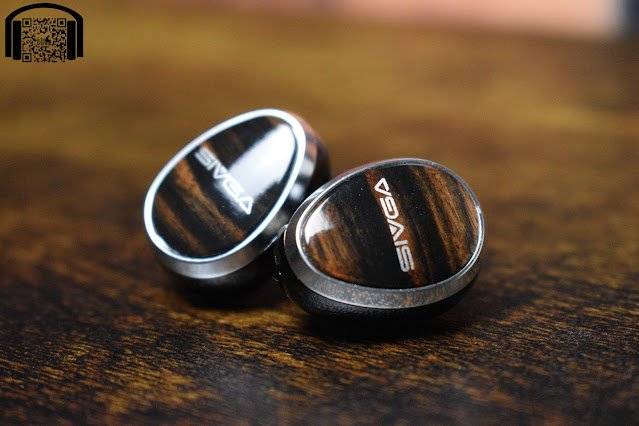

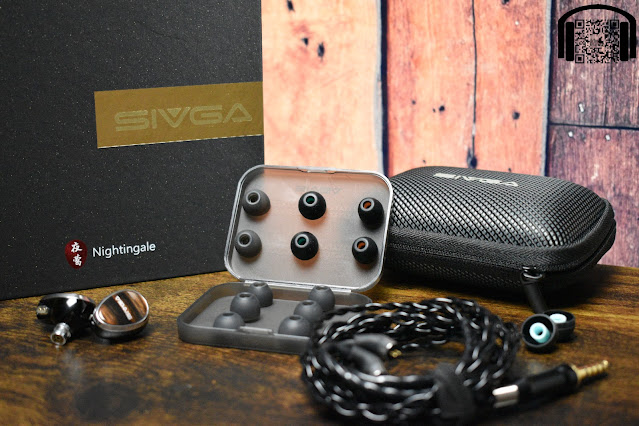



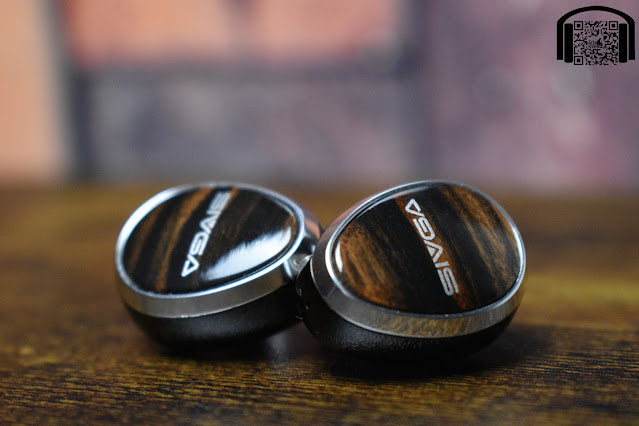
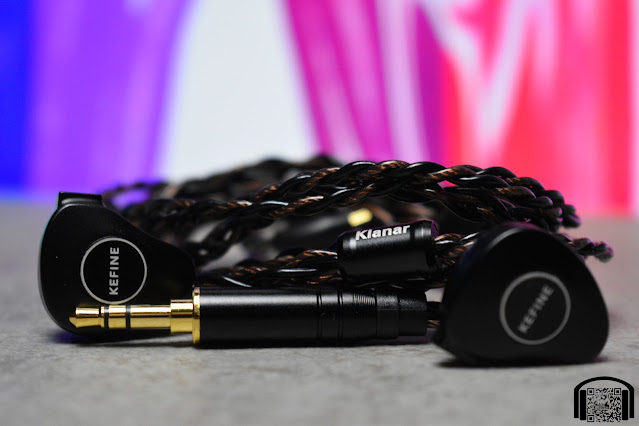
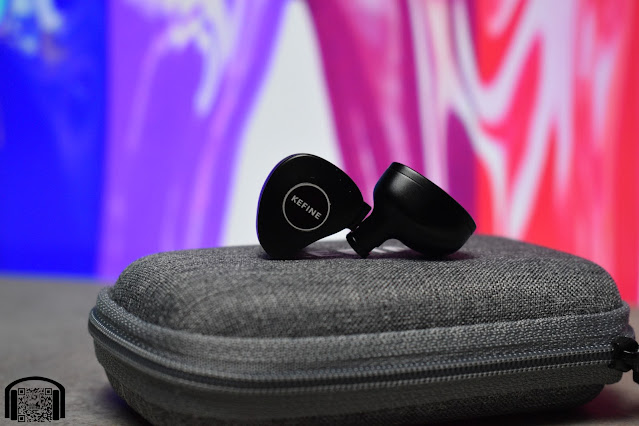
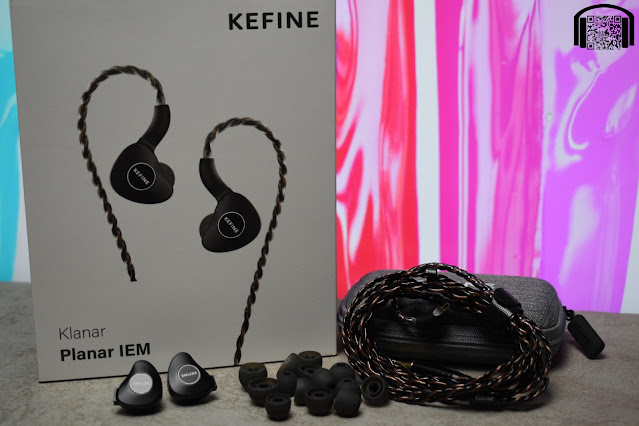



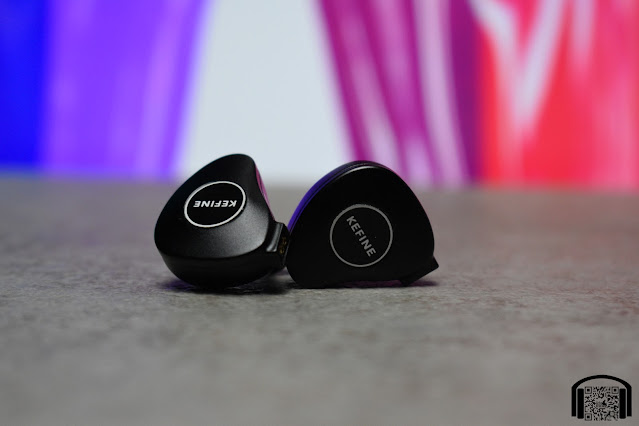
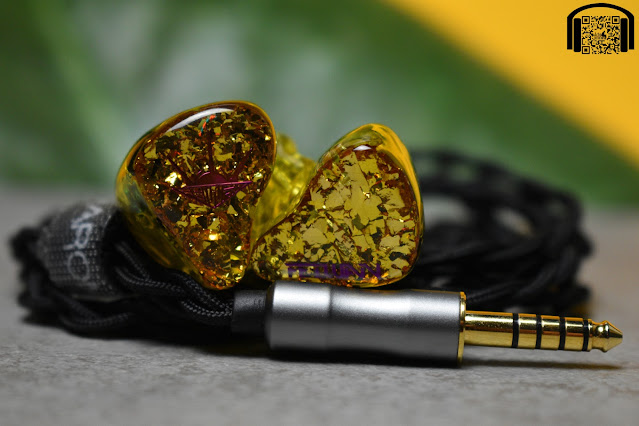

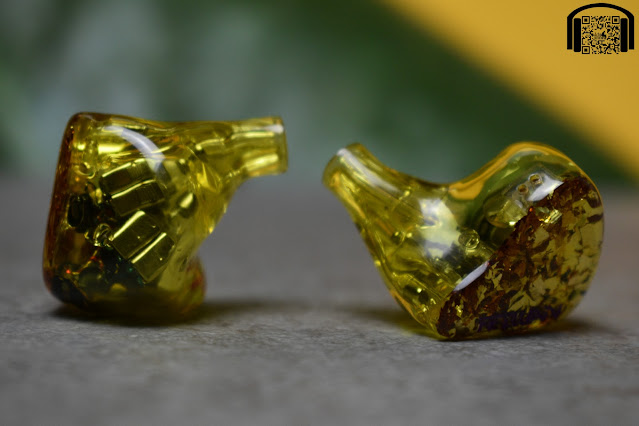
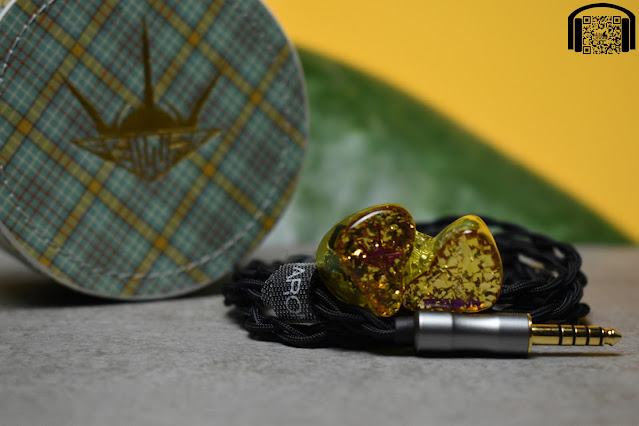

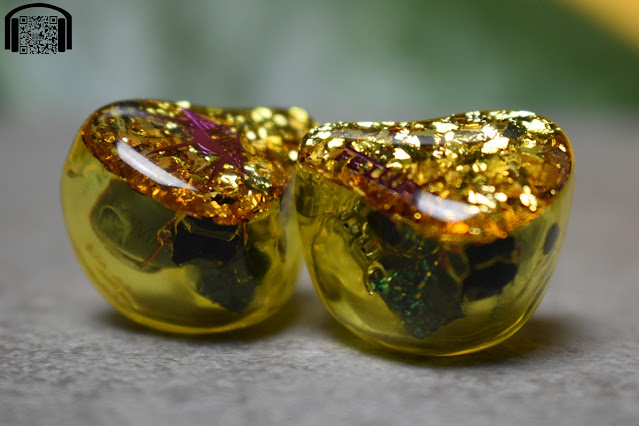

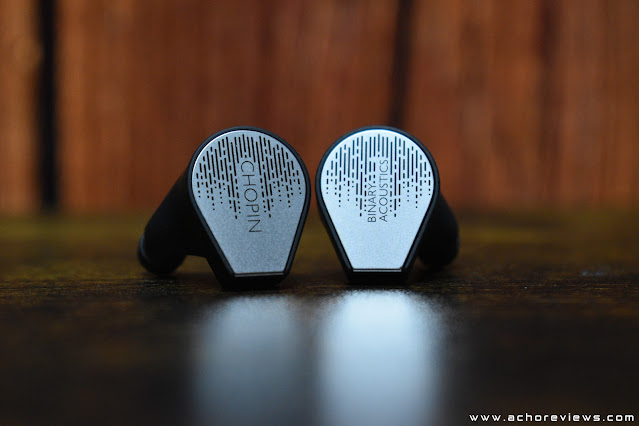




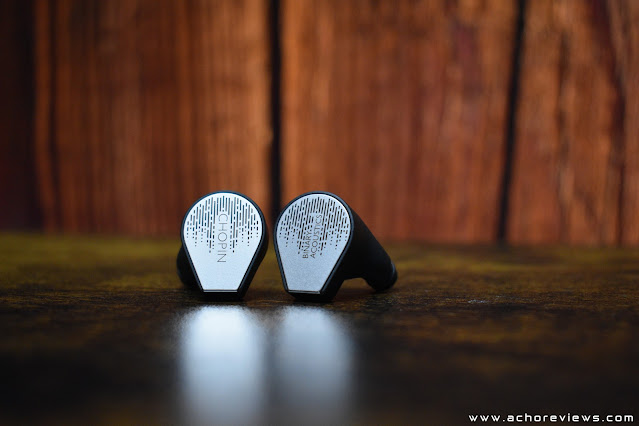


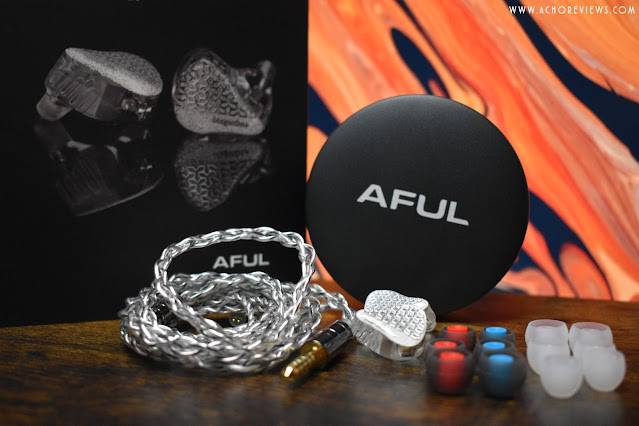
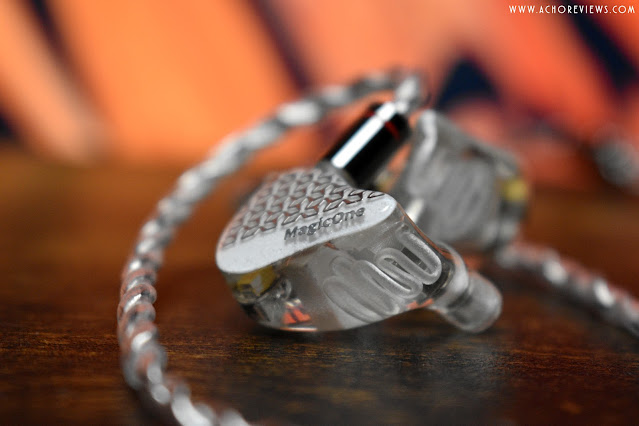


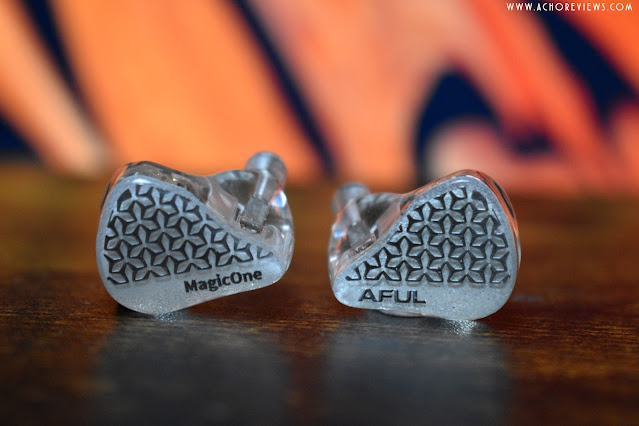
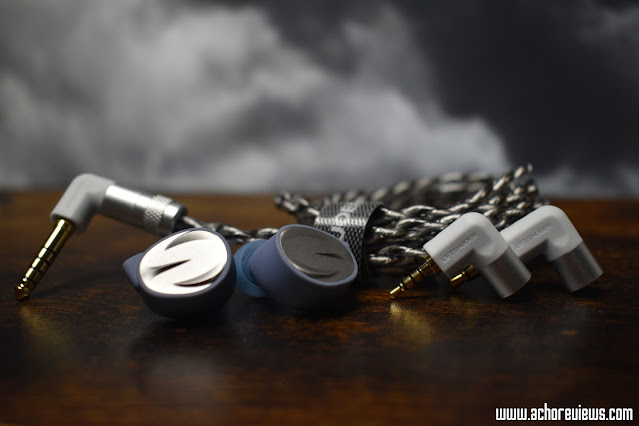
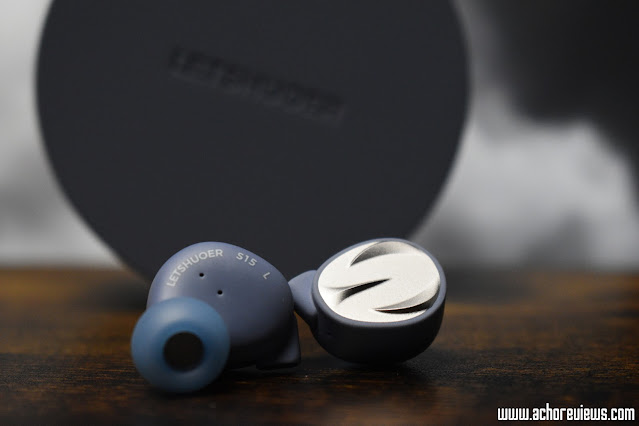
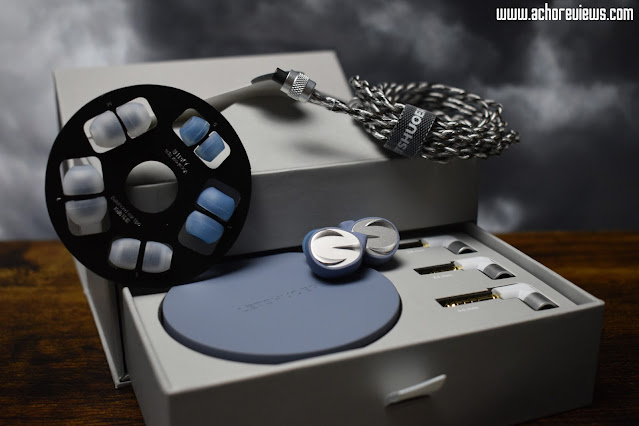


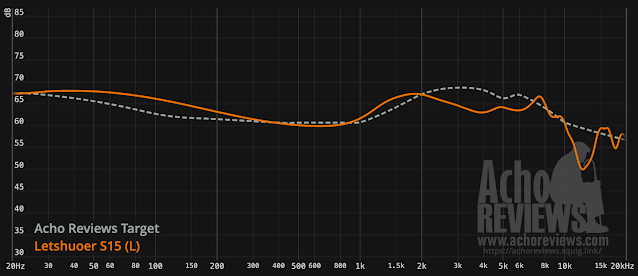
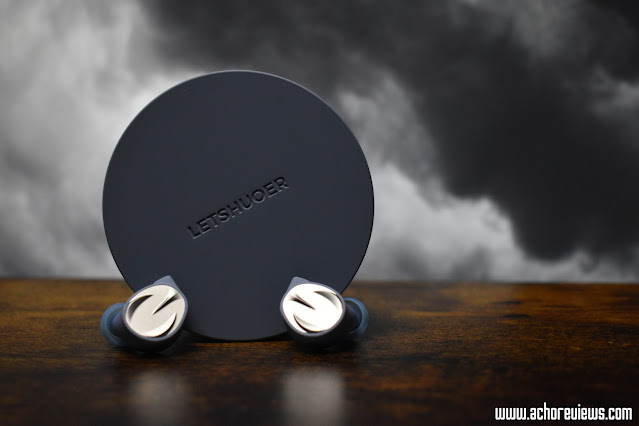


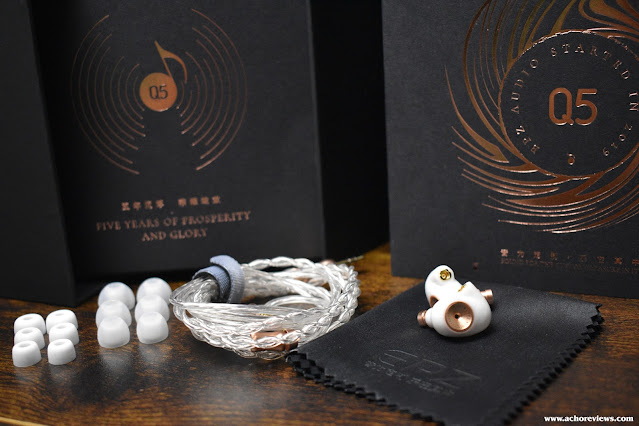

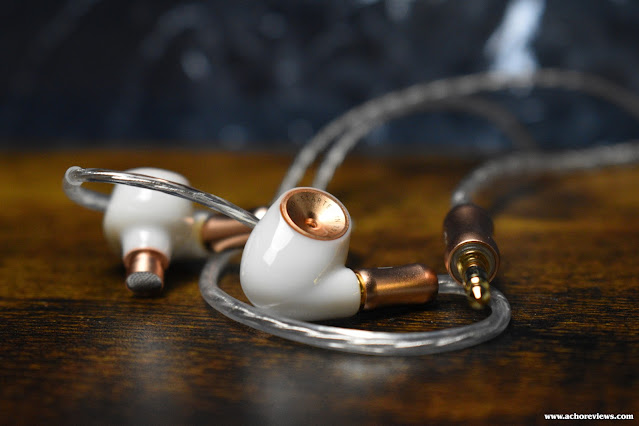
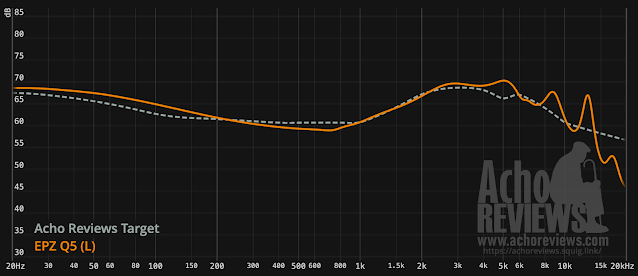
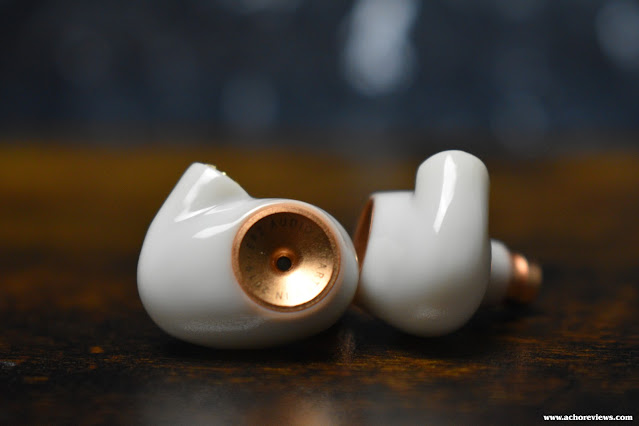
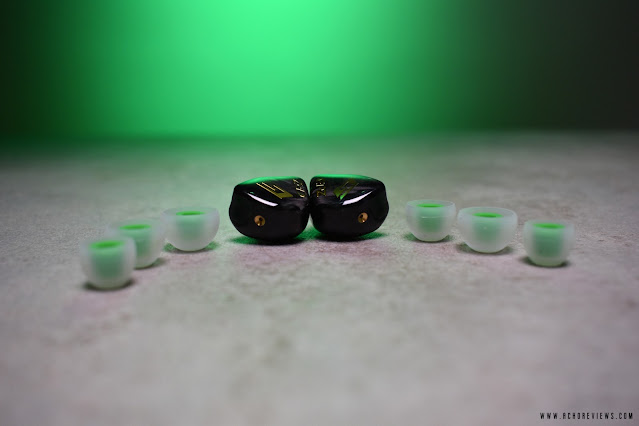
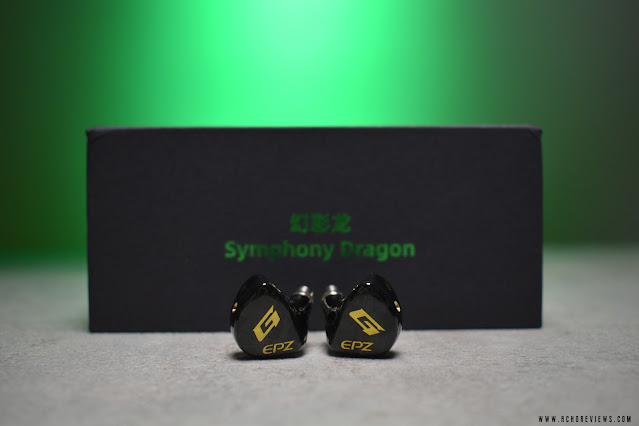


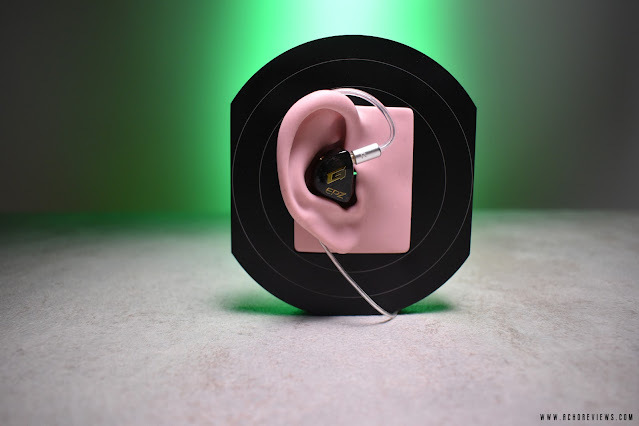



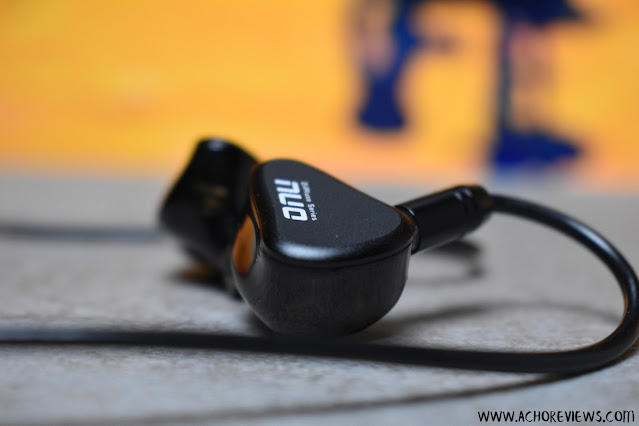

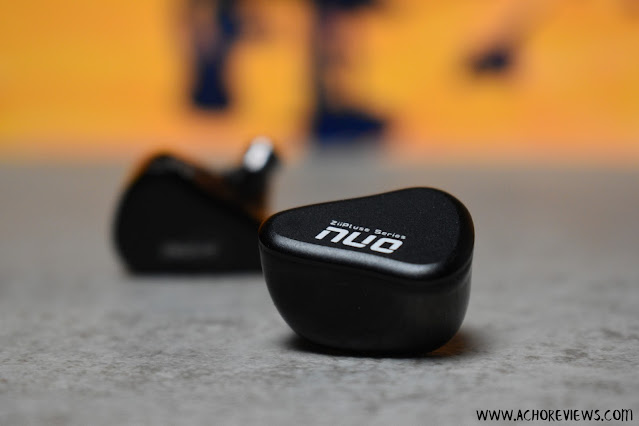


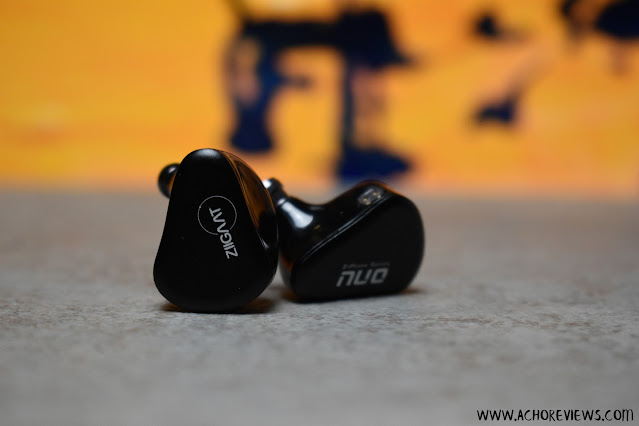





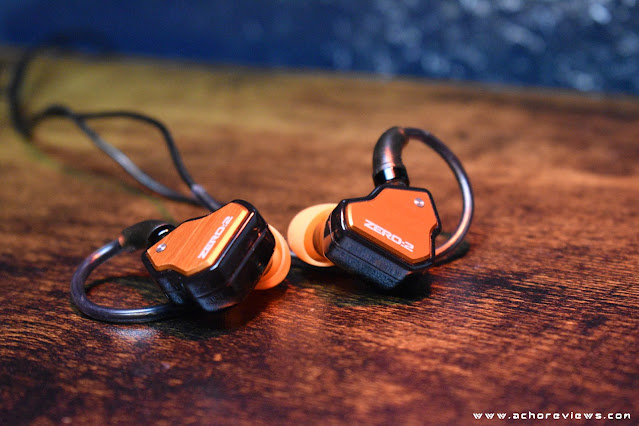

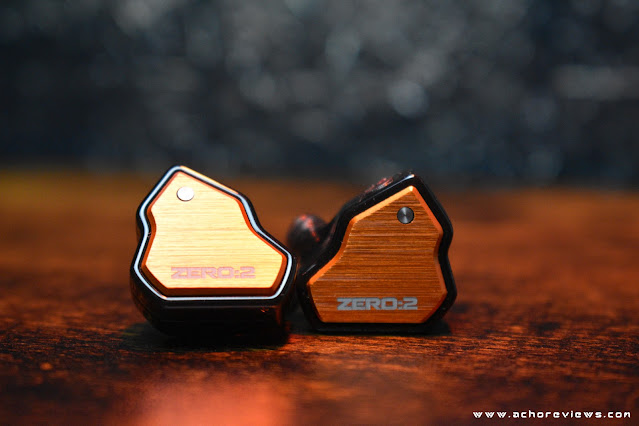


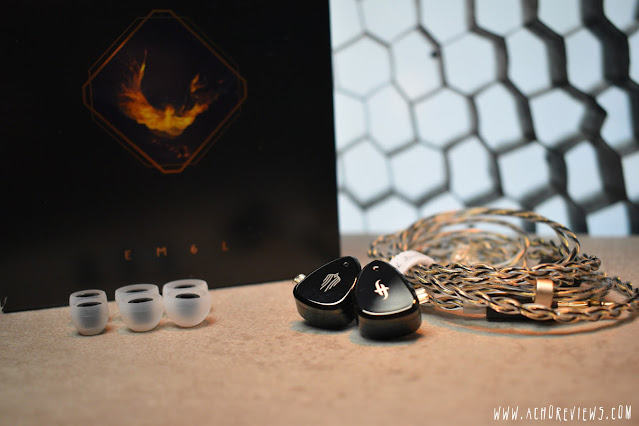
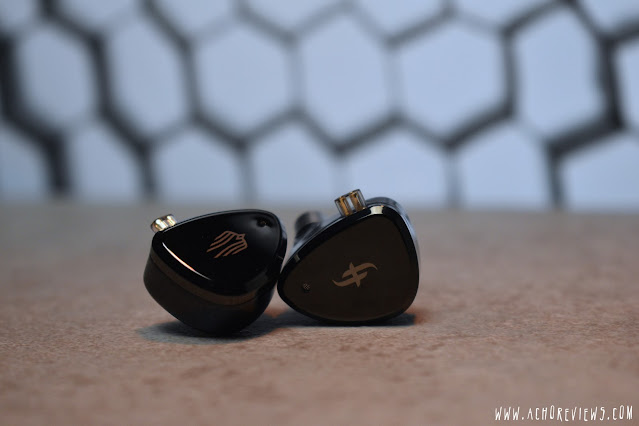



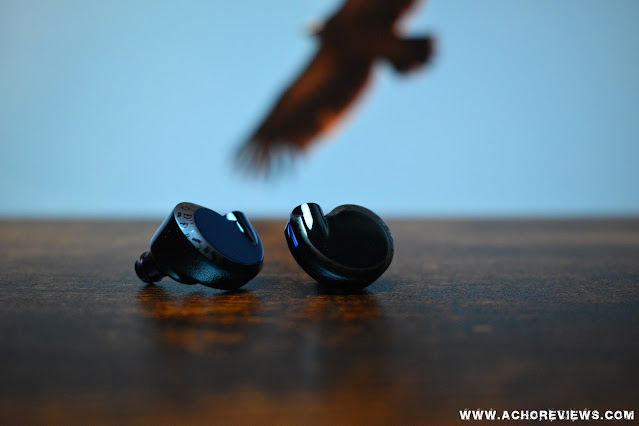

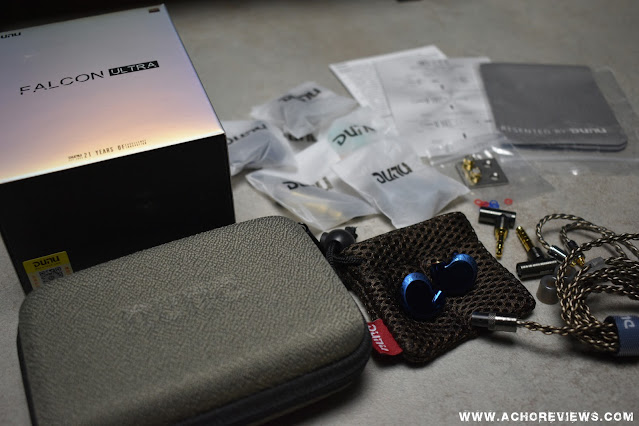

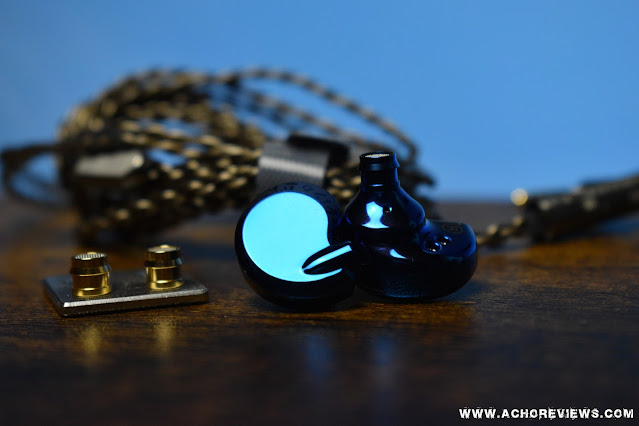

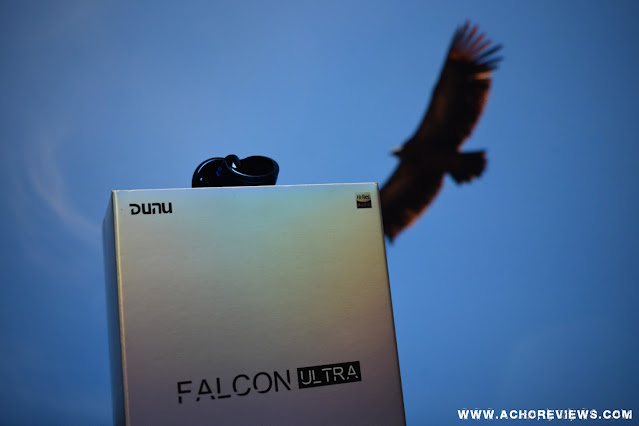
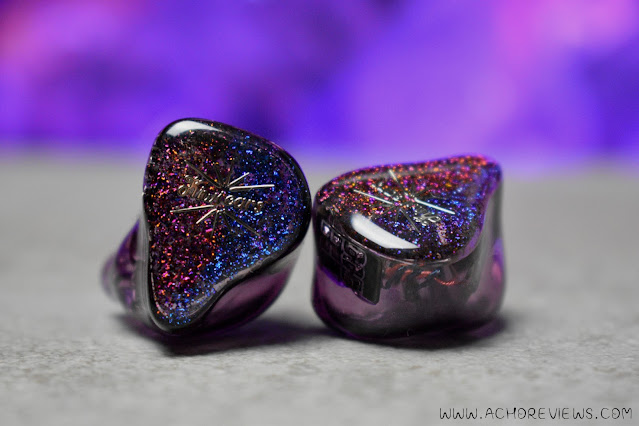
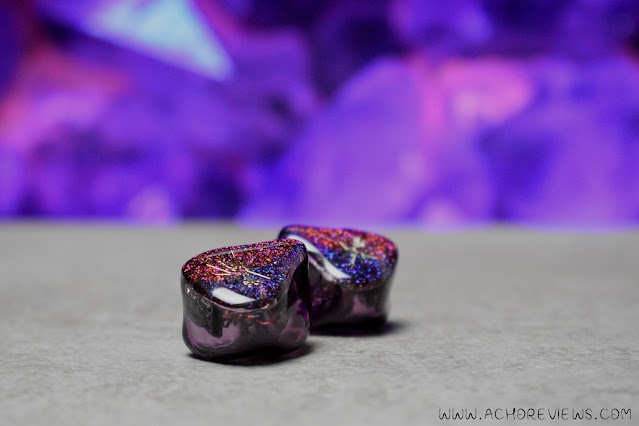
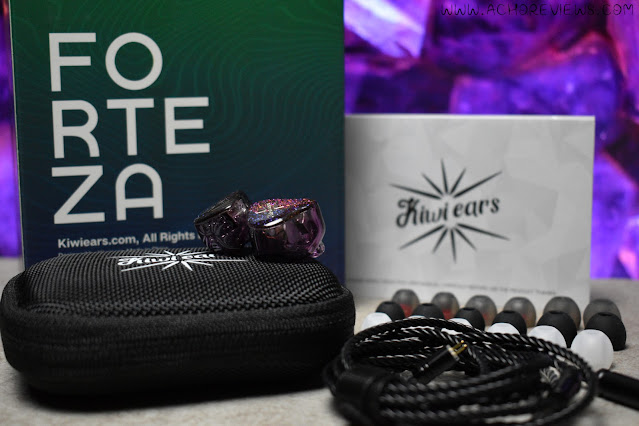

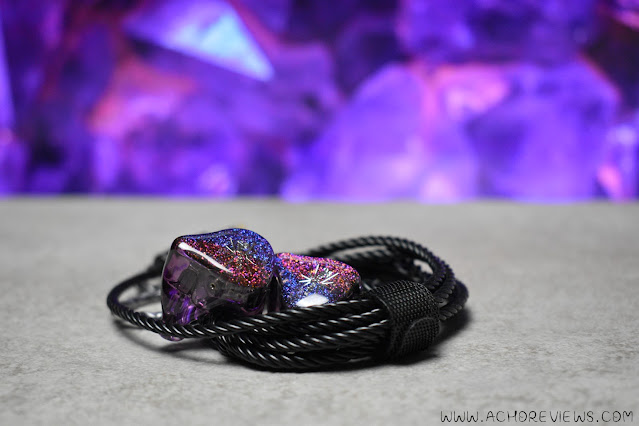
.png)
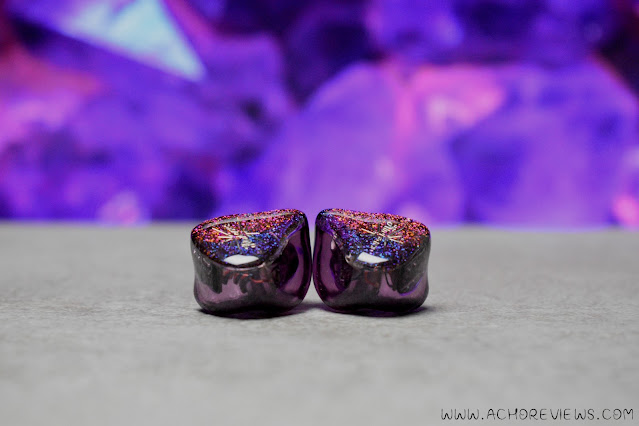



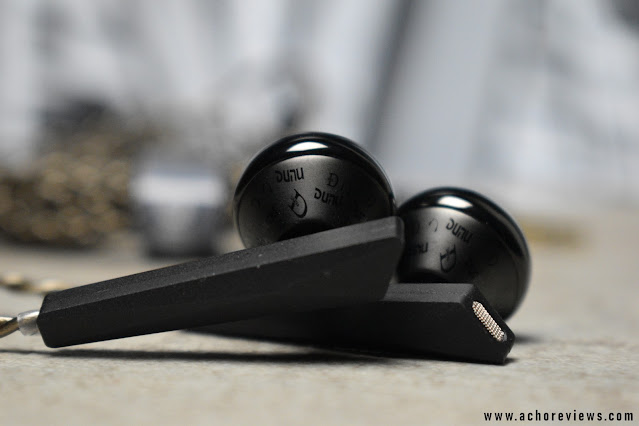
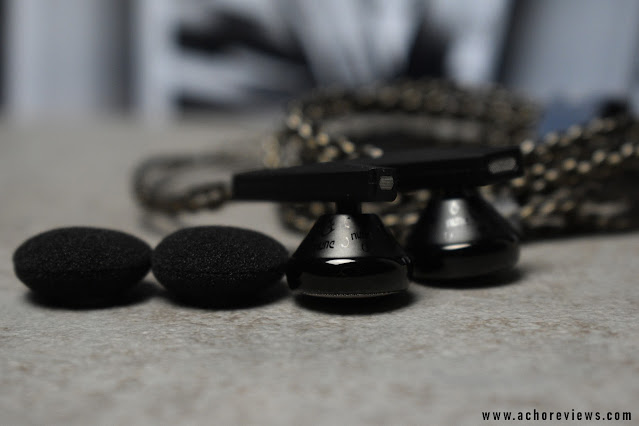
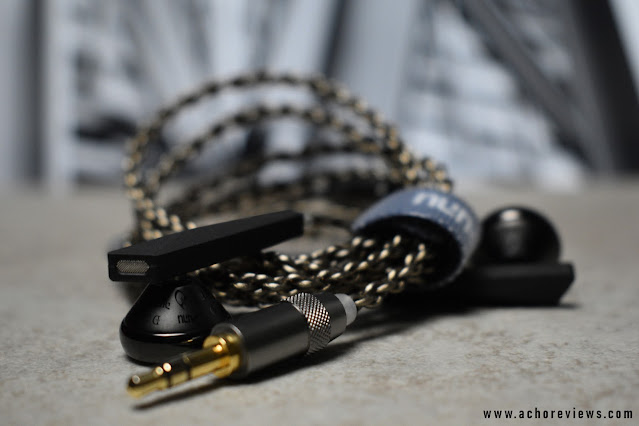

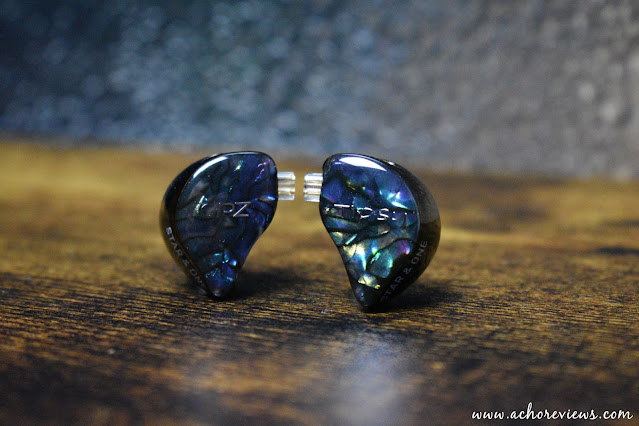
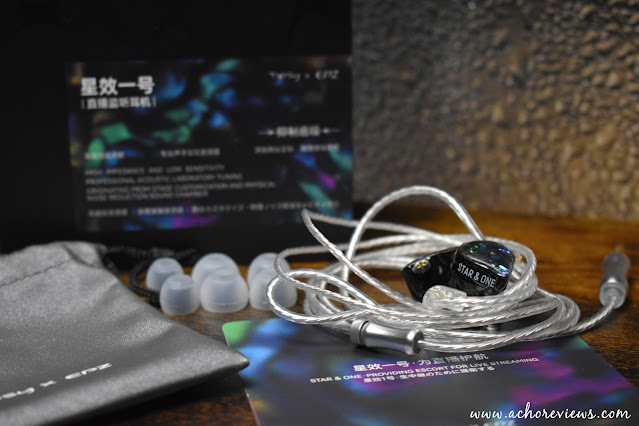

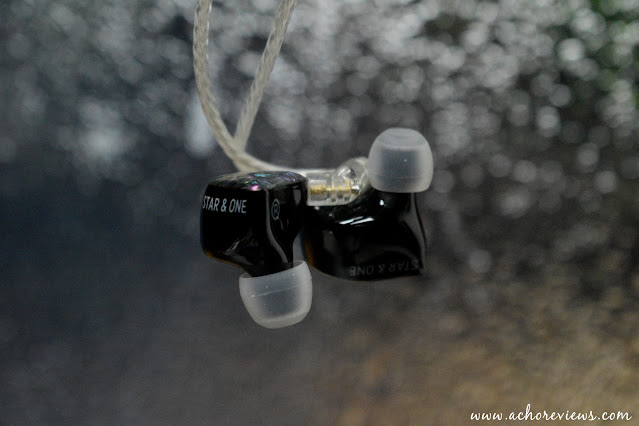
.png)
